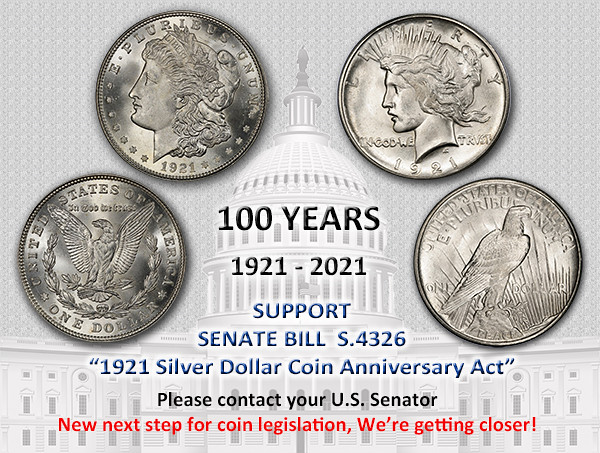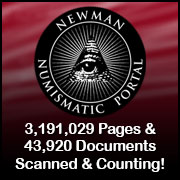
About UsThe Numismatic Bibliomania Society is a non-profit association devoted to the study and enjoyment of numismatic literature. For more information please see our web site at coinbooks.org SubscriptionsThose wishing to become new E-Sylum subscribers (or wishing to Unsubscribe) can go to the following web page link MembershipThere is a membership application available on the web site Membership Application To join, print the application and return it with your check to the address printed on the application. Print/Digital membership is $40 to addresses in the U.S., and $60 elsewhere. A digital-only membership is available for $25. For those without web access, write to: Charles Heck, Treasurer AsylumFor Asylum mailing address changes and other membership questions, contact Chuck at this email address: treasurer@coinbooks.org SubmissionsTo submit items for publication in The E-Sylum, write to the Editor at this address: whomren@gmail.com
BUY THE BOOK BEFORE THE COIN |
- WAYNE'S WORDS: THE E-SYLUM DECEMBER 6, 2020
- NEW BOOK: IMPERIAL LEGITIMATION
- NEW BOOKS: COINS OF ENGLAND 2021
- NEW BOOK: NEW ZEALAND MEDALS, THIRD EDITION
- MEDALLIC ART COMPANY ARCHIVES SITE LAUNCHED
- ANS COLLIER PRIZE IN ANCIENT NUMISMATICS
- VIDEO: THE ORIGIN OF THE DOLLAR SIGN
- VIDEO: FIRST MODERN COIN PCGS GRADED MS70
- 2021 FUN CONVENTION CANCELLED
- STACK'S BOWERS OPENS NEW COMPANY HEADQUARTERS
- PCGS PARENT COLLECTORS UNIVERSE PURCHASED
- FEIGENBAUM: COINS ECLIPSED BY SPORTS CARDS
- NOTES FROM E-SYLUM READERS: DECEMBER 6, 2020
- MORE COINS IN LUCITE
- RENEWED QUERY: A ZERBE-HEEREN CONNECTION?
- VOCABULARY TERM: OPEN FACE DIE
- LIEUTENANT GEORGE CARPENTER ARNOLD (1868-1938)
- CHAPMAN ENVELOPES: FEBRUARY 12, 1880
- HARVEY STACK'S NUMISMATIC FAMILY, PART 84
- INTELLIGENT COLLECTOR INTERVIEWS BOB SIMPSON
- VISUALIZING SARAH SOPHIA BANKS' AFRICAN COINS
- ARCHIVES INTERNATIONAL AUCTION 63
- HOLABIRD DECEMBER 2020 SALE SELECTIONS
- NUMISMAGRAM MEDAL SELECTIONS: DECEMBER 2020
- BRITAIN TO UPDATE 1996 TREASURE ACT
- UNESCO'S DOCTORED PHOTOS AND DISINFORMATION
- 3D-PRINTED COIN FORGERIES
- ADVENT COINS: JOHN THE BAPTIST
- GOLD DROPPED IN CHICAGO SALVATION ARMY KETTLES
- LOUIS ELIASBERG'S BARBER HALF DOLLARS
- THE 1965 COMMEMORATIVE CHURCHILL CROWN
- PURPLE HEART COMMEMORATIVE COIN ACT STATUS
- MEDALS OF THE GRANGE
- THE 1896 CHINA FERRACUTE PATTERNS
- DEL MONTE BANANA LABEL ERROR NOTE OFFERED
- COUNTERFEIT MONEY RING BUSTED IN VIETNAM
- LOOSE CHANGE: DECEMBER 6, 2020
- COIN STUCK IN NOSE FOR 50 YEARS
- FEATURED WEB PAGE: INDIAN BANKNOTE MYTHOLOGY
Content presented in The E-Sylum is not necessarily researched or independently fact-checked, and views expressed do not necessarily represent those of the Numismatic Bibliomania Society.
WAYNE'S WORDS: THE E-SYLUM DECEMBER 6, 2020
 New subscribers this week include:
Howard Feltham,
Jeffery Struve,
and
Wesley Smith.
Welcome aboard! We now have 6,608 subscribers.
New subscribers this week include:
Howard Feltham,
Jeffery Struve,
and
Wesley Smith.
Welcome aboard! We now have 6,608 subscribers.
Thank you for reading The E-Sylum. If you enjoy it, please send me the email addresses of friends you think may enjoy it as well and I'll send them a subscription. Contact me at whomren@gmail.com anytime regarding your subscription, or questions, comments or suggestions about our content.
This week we open with four new books, a new numismatic website, updates from the Newman Numismatic Portal, and more.
Other topics this week include a new headquarters for Stack's Bowers, a new owner for PCGS, user queries, coins in Lucite, open face dies, dealer George Arnold, collectors Harold J. Bareford, Bob Simpson and Sarah Sophie Banks, upcoming auctions, 3D-printed coins, Eliasberg's Barber Half Dollars, the 1965 Churchill Crown, Purple Heart commemoratives, and mythology on Roman Imperial coinage and Indian banknotes.
To learn more about coins of England and the UK, New Zealand medals, the Medallic Art Company archives, the Collier Prize in Ancient Numismatics, the origin of the dollar sign, the January 2021 Florida United Numismatists (FUN) show, sports card mania, Thousand Dollar Road, the National Bureau of Engraving, Salvation Army kettle donations, the Olympic mule cart race, and the bringer of plague, read on. Have a great week, everyone!
Wayne Homren
Editor, The E-Sylum
NEW BOOK: IMPERIAL LEGITIMATION
SPINK Books has published a new title on the iconography of Roman Imperial Coinage. -Editor
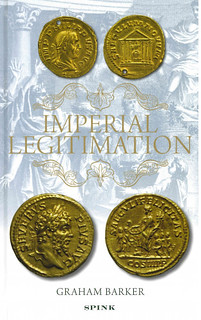 Imperial Legitimation: The Iconography of the Golden Age Myth on Roman Imperial Coinage of the Third Century AD
Imperial Legitimation: The Iconography of the Golden Age Myth on Roman Imperial Coinage of the Third Century AD
by Graham Barker
With a Foreword by Richard Abdy and Sam Moorhead.
Hardback
240 x 152 mm
160 pages with colour illustrations throughout
ISBN: 978-1-912667-47-5
£30.00
This fascinating study of the iconography of the Golden Age Myth on Roman Imperial coinage of the Third Century AD, which started as a master's dissertation, also includes an overview of Saecular Games types down to AD 300. The first study of its kind, it also gives a reconstruction of the Games and appendices with texts from well-known classical authors.
This book looks at the extent to which Roman imperial rulers of the third century AD employed the Golden Age myth for the purpose of legitimation. This is principally a study of the numismatic evidence alongside relevant written records and archaeology. The coins issued during the reigns of Septimius Severus and Philip I are examined in detail, as both emperors are on record as celebrating the Saecular Games (Ludi Saeculares) in the third century AD; these spectacular events came mark the end of one saeculum and the start of a new Golden Age.
For more information, or to order, see:
Imperial Legitimation by Graham Barker
(http://www.spinkbooks.com/index.php?route=product/product&product_id=756)

NEW BOOKS: COINS OF ENGLAND 2021
SPINK has published the 2021 editions of the Coins of England & the United Kingdom books. -Editor
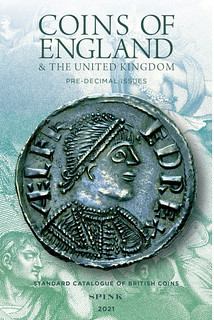 Coins of England and the United Kingdom 2021 Pre-decimal Issues 56th Edition
Hardback
Coins of England and the United Kingdom 2021 Pre-decimal Issues 56th Edition
Hardback
216 x 138mm
632 pages with colour illustrations throughout
ISBN: 978-1-912667-51-2
£30.00
This historic reference work for British coins is still the only catalogue to feature every major coin type from Celtic to the Decimal coinage of Queen Elizabeth II, arranged in chronological order and divided into metals under each reign, then into coinages, denominations and varieties. All decimal coinage since 1968 is listed in a separate volume, available as an independent publication.
The catalogue includes up-to-date values for every coin, a beginner's guide to coin collecting, numismatic terms explained and historical information about each British coin, from our earliest (Celtic) coins, Roman, Anglo-Saxon and Norman coins, the coins of the Plantagenet Kings, the Houses of Lancaster and York, the Tudors and Stuarts, to the more modern Milled coinage, minted for the first time in 1561 during the reign of Elizabeth I.
As always, the content has been updated and improved throughout by the editors, with numerous new images and revisions of key sections.
For more information, or to order, see:
Coins of England and the United Kingdom 2021 Pre-decimal Issues 56th Edition
(http://www.spinkbooks.com/index.php?route=product/product&path=59/&product_id=759)
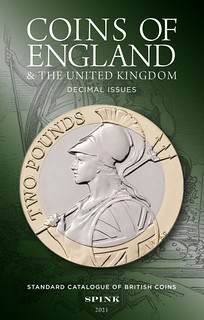 Coins of England and the United Kingdom 2021 Decimal Issues 7th Edition
Coins of England and the United Kingdom 2021 Decimal Issues 7th Edition
Paperback
216 x 138mm
334 pages with colour illustrations throughout
ISBN: 978-1-912667-52-9
£9.99
The Coins of England and the United Kingdom Pre-Decimal and Decimal volumes comprise the Standard Catalogue of British Coins, with the pre-decimal issues under Elizabeth II (and all previous coinage) listed in a separate volume.
This volume of Decimal issues under Elizabeth II gives a comprehensive overview of all individual coins and sets issued by the Royal Mint since 1971 (and in circulation since 1968), offering an authoritative catalogue of modern British coins.
It has been fully revised and updated for 2021.
For more information, or to order, see:
Coins of England and the United Kingdom 2021 Decimal Issues 7th Edition
(http://www.spinkbooks.com/index.php?route=product/product&path=59/&product_id=760)
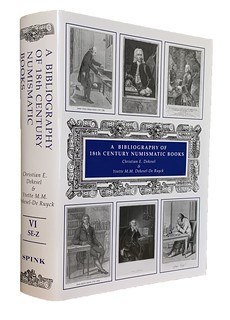
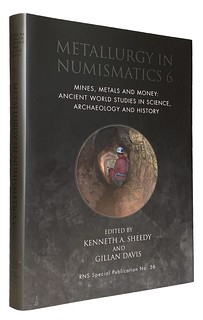
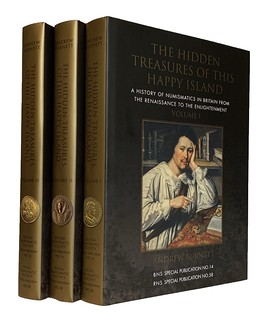
U.S. Numismatic literature dealer Charles Davis adds:
"It will take some time to get "Coins of England" in the States, but I should have it around the first of the year. In the meantime, I have three new titles from Spink. They are in stock and will be added to our Vcoins site shortly.
"Dekesel: A Bibliography of 18th Century Numismatic Books, Part VI, the final part in completing the century and the series - 16th - 18th centuries. $200.00
"Metallurgy in Numismatics Volume 6 - Mines, Metals, and Money: Ancient World Studies in Science, Archaeology and History, RNS Special Publication 56, edited by Kenneth A Sheedy and Gillian Davis. $80.00
"The Hidden Treasures of this Happy Island - A History of Numismatics in Britain from the Renaissance to the Enlightenment, RNS Special Publication 58, BNS Special Publication 14 by Andrew Burnett" $190.00
Charlie's web site is https://www.numisbook.com/ -Editor
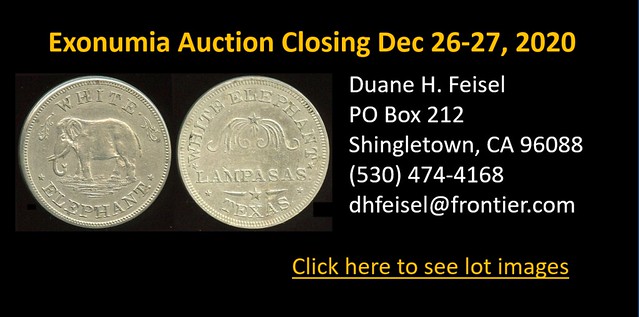
NEW BOOK: NEW ZEALAND MEDALS, THIRD EDITION
Martin Purdy submitted this information on updates to books on New Zealand commemorative medals from the Royal Numismatic Society of New Zealand. Thanks! -Editor
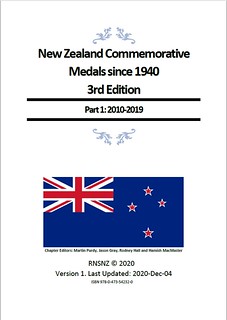
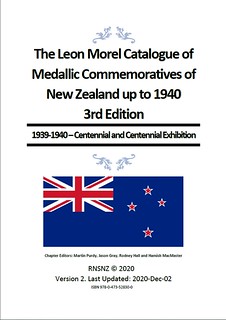
Following the launch of the first part of the new edition of the "Morel" catalogue of New Zealand commemorative medals prior to 1940 earlier this year, we've now completed and released the first chapter of the companion "MacMaster/Purdy" catalogue which is devoted to the post-1940 period. Part I covers the 2010-2019 decade. For both titles we're starting with the most recent chapters and working backwards - mainly because the majority of the new issues to be recorded are (logically) the newest issues in the case of the postwar series, and (perhaps surprisingly) the items made to mark the Centennial celebrations in 1939-40.
Work will continue on further parts of both titles in 2021, and they'll be added to the same web page. Don't worry, we won't announce every single chapter in this way!
The download link for the "2010-2019" chapter is the same as that provided previously. An updated version of the Centennial chapter can also be collected at the same time. Here's the release notice we're circulating today.
Part 1 of the 3rd edition of the MacMaster/Purdy catalogue of commemorative medals post-1940 is now available. This section covers the issues for the 2010-2019 decade.
Each chapter will be made available online as a colour PDF and can be downloaded at no cost. Feel free to share them (with due acknowledgement for the RNSNZ as publisher please), but note they are not intended either for sale or resale.
Collect your copy from www.RNSNZ.org.nz/collector-info/catalogues (this is in the public area of the website; no login is needed).
Further parts will be added once ready, and an updated version of the Centennial chapter of "Morel 3" is also available for downloading. Work will continue on further chapters of both titles next year.
Let us know of any errors, omissions or new discoveries. One advantage with electronic publishing is that we can update whenever necessary and make a new version available for downloading. It may pay to look in on the "catalogues" folder periodically to make sure the versions you have are the most recent.
Martin Purdy
martin_lists@yahoo.com
To read earlier E-Sylum articles, see:
BOOK REVIEW: CATALOGUE OF NEW ZEALAND COMMEMORATIVE MEDALS 1941-2007
(https://www.coinbooks.org/esylum_v13n08a07.html)
NEW BOOK: NEW ZEALAND COMMEMORATIVE MEDALS 1941-2014
(https://www.coinbooks.org/esylum_v17n46a05.html)
NEW BOOK: NEW ZEALAND MEDALS 1939-40
(https://www.coinbooks.org/v23/esylum_v23n36a05.html)
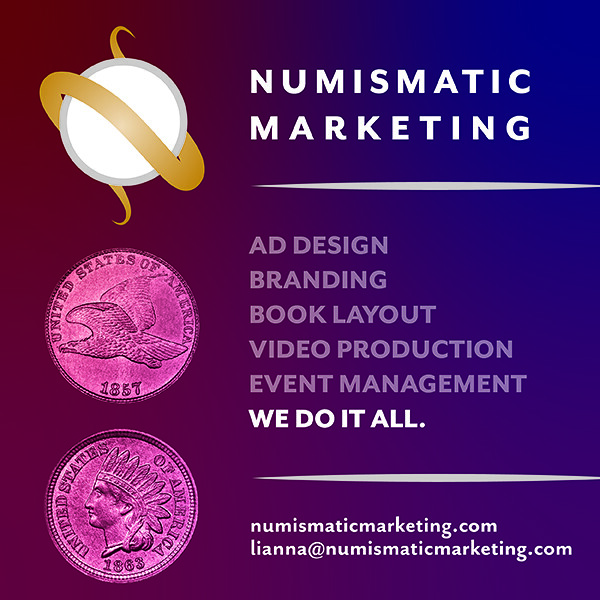
MEDALLIC ART COMPANY ARCHIVES SITE LAUNCHED
The ANS has announced a new website devoted to their recent major acquisition of the archives of the Medallic Art Company. Here's the press release. -Editor
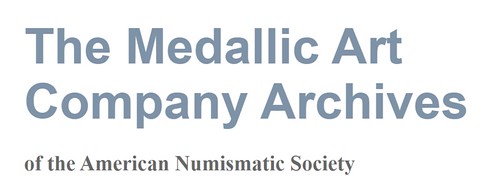
ANS Launches MACO Archives Website The American Numismatic Society is pleased to announce the launch of the Medallic Art Company (MACO) Archives website. This website is designed to provide a glimpse into the MACO Archives and to serve as a location for updates about the collection as the ANS moves forward with the project. View the website at http://numismatics.org/maco/.
Until its bankruptcy in 2016, MACO was one of the oldest and largest operating private mints in the United States. Founded in New York City around 1907, for more than a century MACO employed some of America's most notable artists to craft commemorative, award, portrait, and other medals for a huge number of individuals and institutions. Many of the most famous medals in the United States—including the Pulitzer Prize Medal, the Randolph Caldecott medal, and official medals of Presidential inaugurations—were produced by the Medallic Art Company.
In 2017 the American Numismatic Society acquired the MACO archives—which consist of over 50,000 individual items, including medals, dies, galvanos, plaques, and photographic records—and set about making these precious resources accessible to collectors, scholars, and all other interested individuals. Central to these efforts is the The MACO Archives website. The site is divided into five categories to facitate navigation:

The MACO Specimen Archive includes basic information for nearly every medal that MACO produced between 1907 and 2013. This is a primary component to the website and can help researchers and interested parties with identifying a given medal.
The Essays component contains articles related to the history of MACO and medals more broadly.
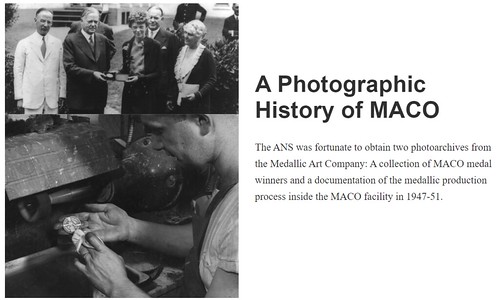
The Photo Archives give a visual glimpse into MACO, especially regarding production of the medals and their recipients from the mid-20th century.
The Future of MACO outlines the long-term goals of the American Numismatic Society for the collection.
Lastly, the Blog is where the ANS will update visitors to the site of the progress being made on the collection in real time. Subscribers to the blog will automatically receive these updates.
"This collection is an invaluable part of American cultural heritage, in terms of art, history, and society," said Dr. Jesse Kraft, Assistant Curator of American Numismatics, "The ANS is proud to own the collection and happy that we are able to share more and more information on one of the most important private mints in American history."
To explore the site, see:
The Medallic Art Company Archives
of the American Numismatic Society
(http://numismatics.org/maco/)
To read earlier E-Sylum article, see:
ANS ACQUIRES MEDALLIC ART COMPANY ARCHIVES
(https://www.coinbooks.org/v21/esylum_v21n39a17.html)
ANS EXHIBITS MEDALLIC ART COMPANY ARCHIVES
(https://www.coinbooks.org/v21/esylum_v21n42a28.html)

ANS COLLIER PRIZE IN ANCIENT NUMISMATICS
The ANS has announced the establishment of a new prize in Ancient Numismatics. Here's the press release. -Editor
The American Numismatic Society Announces New Prize in Ancient Numismatics
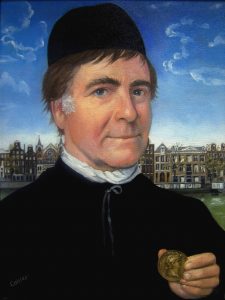 The American Numismatic Society (ANS) is pleased to announce the Collier Prize in Ancient Numismatics, given in memory of the late Professor James M. Collier. The Collier Prize in Ancient Numismatics is a substantial monetary prize that will be awarded biennially to the best single- or multi-authored book, catalogue, or online digital work in the field of ancient numismatics (650 BCE–300 CE).
The American Numismatic Society (ANS) is pleased to announce the Collier Prize in Ancient Numismatics, given in memory of the late Professor James M. Collier. The Collier Prize in Ancient Numismatics is a substantial monetary prize that will be awarded biennially to the best single- or multi-authored book, catalogue, or online digital work in the field of ancient numismatics (650 BCE–300 CE).
A jury of five senior numismatists, including a senior ANS curator, will be appointed biennially by the President of the American Numismatic Society to select the recipients. The Collier Prize will be offered for the first time in 2021 and the winner(s) will receive prize money of $20,000, to be split equally in the event of a multi-authored work. For the initial prize, eligible publications will be limited to those works published in 2019 or 2020. The jury will announce its selection in late 2021. Details for the Collier Prize can be found on the ANS's website at numismatics.org/collier.
The Collier Prize honors the life of Professor James M. Collier. Professor Collier was born in Bellingham, Washington and completed his PhD in Art History at the University of Michigan in 1975. He served as a tenured professor and department chair in the Art History Department at Auburn University (Auburn, Alabama). Over the course of his academic career, he lectured widely and published on the Italian Renaissance and Early Netherlandish perspective, which was the subject of his doctoral dissertation.
In addition to his scholarship, Professor Collier actively pursued other interests. He traveled widely and met his wife Carole Anne in the Sacristy of Santa Croce in Florence, Italy. In total, he visited 84 countries—including in 2012 when he sailed with a crew of three on a 50-foot sailboat from South Africa to Brazil. In 1990, Professor Collier and Carole Anne moved to the Netherlands, where he was a self-sufficient artist until the end of his life. His paintings cover a range of topics, including portraits, dogs, views of Amsterdam, Italian architecture, ships, and fantasies, many of which can be found on the website jimcollier.nl.
Collecting ancient coins was the foundation of his broad fascination with art, history, and culture. His collection of almost 1,000 Greek and Roman coins gave him immense pleasure, continually inspiring him by their beauty and depictions of famous monuments and portraits of Hellenistic and Roman rulers. A complete profile of Professor Collier will be included in the Spring issue of the ANS Magazine.
For more information, see:
The Collier Prize in Ancient Numismatics
(http://numismatics.org/collier/)
To read the complete article, see:
Press Release: The American Numismatic Society Announces New Prize in Ancient Numismatics
(http://numismatics.org/press-release-the-american-numismatic-society-announces-new-prize-in-ancient-numismatics/)
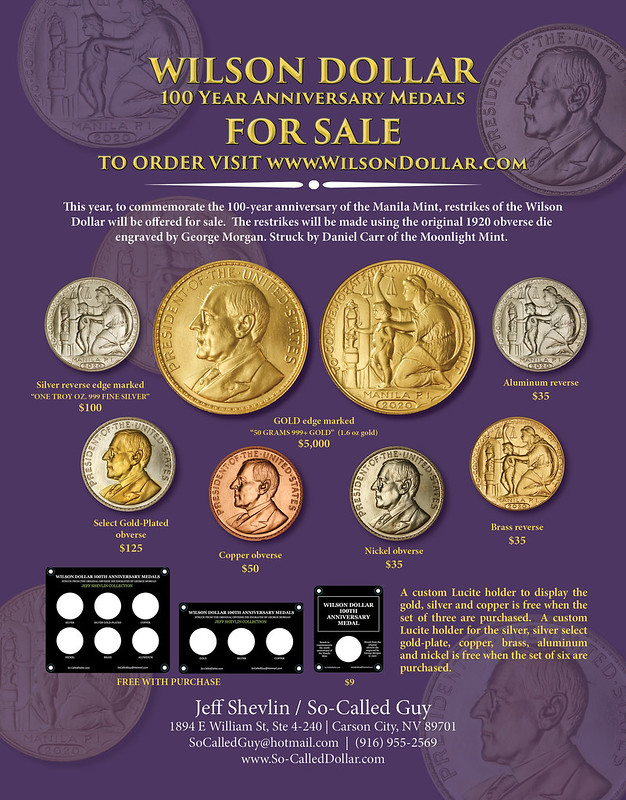
VIDEO: THE ORIGIN OF THE DOLLAR SIGN
The latest addition to the Newman Numismatic Portal is a new video on the origin of the dollar sign. Project Coordinator Len Augsburger provided the following report. Thanks. -Editor
New Video on the Origin of the Dollar Sign
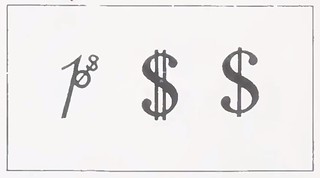 In 1993, Eric P. Newman published the paper "Origin of the Dollar Sign" in the American Numismatic Society Coinage of the America Conference proceedings. This work traced the evolution of "ps" (Spanish abbreviation for peso) into the now ubiquitous "$." Newman located varying forms in both manuscript and printed documents, with manuscripts naturally predating printed usage. In this video, Lianna Spurrier neatly summarizes Newman's investigation, including interspersed video from Newman's presentation on the topic at the 1991 ANA convention.
In 1993, Eric P. Newman published the paper "Origin of the Dollar Sign" in the American Numismatic Society Coinage of the America Conference proceedings. This work traced the evolution of "ps" (Spanish abbreviation for peso) into the now ubiquitous "$." Newman located varying forms in both manuscript and printed documents, with manuscripts naturally predating printed usage. In this video, Lianna Spurrier neatly summarizes Newman's investigation, including interspersed video from Newman's presentation on the topic at the 1991 ANA convention.
Link to Getting to Know Eric P. Newman, Part Four, Origin of the Dollar Sign, by Lianna Spurrier:
https://nnp.wustl.edu/library/book/592172
Link to Newman's "Origin of the Dollar Sign" article from the 1993 ANS Coinage of the Americas Conference:
https://nnp.wustl.edu/library/book/512704
Link to Newman's 1991 ANA presentation, "Puzzling Origin of the Dollar Sign":
https://nnp.wustl.edu/library/book/544894
VIDEO: FIRST MODERN COIN PCGS GRADED MS70
These are selections from the David Lisot Video Library that feature news and personalities from the world of coin collecting. David has been attending coin conventions since 1972 and began videotaping in 1985. The Newman Numismatic Portal now lists all David's videos on their website at:
https://nnp.wustl.edu/library/multimediadetail/522852
Here's one on the first modern coin graded MS70 by PCGS. -Editor
First Modern Coin Ever Graded MS70 by PCGS. June 1, 2016.
VIDEO: 3:26.
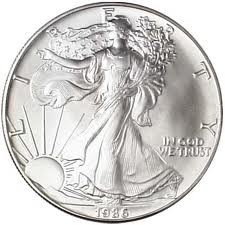 John Highfill, Founder, National Silver Dollar Roundtable,
John Highfill, Founder, National Silver Dollar Roundtable,
David Lisot, Interviewer, CoinTelevision.com.
In 1986 when the America Silver Eagle dollar coin was introduced John Highfill saw a business opportunity. He ordered a quantity of the new coins and sent them to David Hall of the Professional Coin Grading Service for encapsulation. Learn about what happened next.
An excerpt of the video is available for viewing on the Coin Television YouTube Channel at:
https://youtu.be/bgADa9z_Zog

2021 FUN CONVENTION CANCELLED
The January 2021 Florida United Numismatists (FUN) show has been cancelled. Here's the press release. -Editor
2021 FLORIDA UNITED NUMISMATISTS CONVENTION CANCELLED
It is with great disappointment that the Florida United Numismatists (FUN) board of directors is announcing FUN 2021 is cancelled. Slated for January 7-10, 2021 at the Orange County Convention Center in Orlando, Florida, the convention would have been the 66th annual event held by the Florida organization devoted to serving collectors of coins, paper money, medals, and tokens.
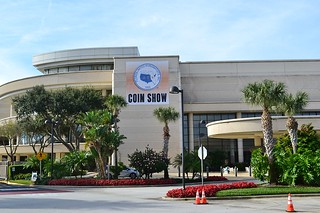 The FUN board has worked hard to make this show a reality, desperately wanting to provide a venue for our dealers to get back to what they love and have our numismatic community be able to convene again. However, it has become clear that the "cons" far outweigh the "pros" at this point in time. The COVID virus is spiraling out of control and the predictions are that will continue to get worse through the dates of the FUN show.
The FUN board has worked hard to make this show a reality, desperately wanting to provide a venue for our dealers to get back to what they love and have our numismatic community be able to convene again. However, it has become clear that the "cons" far outweigh the "pros" at this point in time. The COVID virus is spiraling out of control and the predictions are that will continue to get worse through the dates of the FUN show.
First and foremost is the concern for the health and well-being of our dealers, our service providers, and our public attendees. There are currently many concerns and many unknowns. The FUN board built in precautions with mandatory masks, purchasing hand sanitizer, and performing daily temperature checks of everyone who enters the bourse area but was still apprehensive about being able to keep everyone safe with some level of social distancing and other safety measures.
"It was a very difficult decision, but we must cancel the FUN 2021 convention," says FUN President Bob Hurst. "The board of directors agreed to continue as long as the percentage of positive COVID-19 tests stayed at 10% or less in Orange County, Florida. Currently, it is at 14%, and we cannot wait to see if it will go down. Making the decision to cancel this 66th annual show was not made in haste. I hope to see all of you at Summer FUN 2021."
"I know this was an incredibly difficult decision of the entire FUN Board, but it was the correct one," remarks Heritage Auctions CEO Steve Ivy. "In the final analysis the wellbeing of FUN and its members is the ultimate consideration. The January FUN convention is and will continue to be the premier coin show of the year. Heritage Auctions and its entire staff look forward to the upcoming summer show and auction with even more anticipation than normal. And the January 2022 show will be like no other."
Our clubs are unable to get their members to commit to attend the show and are cancelling their FUN-sponsored club buses. We believe this is a good indicator that the public is not yet comfortable attending a convention.
If you booked a hotel reservation through FUN's official housing bureau your reservation will automatically be cancelled. Refund checks will be mailed to all who paid a bourse fee.
FUN deeply regrets disappointing many people, but we look forward to better days ahead and a hugely successful show in July 2021. We encourage all of you to consider attending Summer FUN in 2021. The FUN board will meet in the early spring to consider special plans for that show to help make up for the loss of our January show. We will have plenty of promotional items in storage to give away and we can all celebrate better days together. Thank you for your patience and understanding as we navigate these unprecedented situations.
For more information, see:
http://www.funtopics.com/
Paul Bosco writes:
"Covid vaccines are a game-changer, respecting airline travel, and therefore coin shows and auctions. I am thinking, there are probably readers, like me, who have notions about all this. Maybe there are readers who actually have real knowledge about public health & air travel, and maybe they would send in their thoughts. I know I would certainly like to have a better feel for how things may play out."
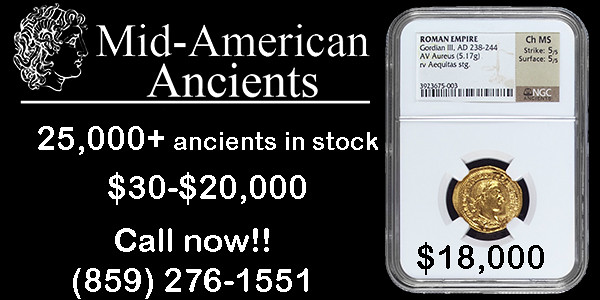
STACK'S BOWERS OPENS NEW COMPANY HEADQUARTERS
Here's the press release on Stack's Bowers Galleries new California headquarters. -Editor
Stack's Bowers Galleries Opens New Company Headquarters in Southern California
 Stack's Bowers Galleries is happy to announce the opening of their new headquarters in
beautiful Orange County, California. Located at 1550 Scenic Avenue, Suite 150 in the city of Costa Mesa, the new
Stack's Bowers Galleries facility will serve as the production hub for their global numismatic operations,
coordinating their network of offices throughout the United States, Europe and Asia.
Stack's Bowers Galleries is happy to announce the opening of their new headquarters in
beautiful Orange County, California. Located at 1550 Scenic Avenue, Suite 150 in the city of Costa Mesa, the new
Stack's Bowers Galleries facility will serve as the production hub for their global numismatic operations,
coordinating their network of offices throughout the United States, Europe and Asia.
This new headquarters features several important innovations, including an onsite auction gallery and dedicated lot viewing facilities within a state-of-the-art 5,000 square foot event space. Collectors will also be able to consult with experts across all numismatic categories by appointment, providing a valuable resource for appraisals, purchases, sales, and auction consignments. With about 25% more space than their previous location, this new Orange County facility is designed to support the firm's growing business and the expanded range of services that continue to make Stack's Bowers Galleries a global leader in all areas of numismatics.
This modern, spacious, and secure facility is located just off the 405 Freeway, granting convenient access to the area's spectacular beaches along with world-class shopping and dining at South Coast Plaza. Visitors from outside the region will appreciate the availability of exceptional hotels and other amenities nearby, as well as convenient access to the international travel hubs of Los Angeles International Airport (LAX) and John Wayne Airport, Orange County (SNA).
The debut of this Southern California facility is the latest in a series of recent expansions by Stack's Bowers Galleries aimed at delivering superior value and service to their clients. The firm opened a new flagship gallery at 470 Park Avenue in New York City in the summer of 2020, which offers an extensive range of services including appraisals, bullion and numismatic retail sales, and auction expertise. In addition, their recent acquisitions of Carter Numismatics in Oklahoma and the Coins in Motion imaging technology enhance the firm's portfolio of world- renowned expertise and innovative technology, confirming Stack's Bowers Galleries as an unrivaled resource for collectors. For more information about the firm's new headquarters or to make an appointment with one of their numismatic experts, call 800-458-4646 or e-mail Info@StacksBowers.com.
To read earlier E-Sylum articles, see:
STACK'S BOWERS GALLERIES OPENS NEW YORK LOCATION
(https://www.coinbooks.org/v23/esylum_v23n43a18.html)
STACK'S BOWERS GALLERIES ACQUIRES COINS IN MOTION
(https://www.coinbooks.org/v23/esylum_v23n47a12.html)
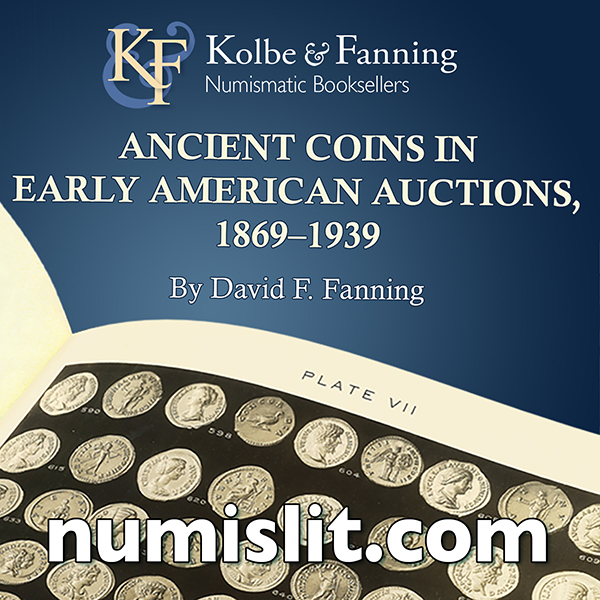
PCGS PARENT COLLECTORS UNIVERSE PURCHASED
Billionaire investor Steve Cohen has purchased Collectors Universe, parent of third-party grader PCGS together with sports card entrepreneur Nat Turner. The company says its headquarters will remain in Santa Ana, California. The deal takes the public company private again. It's unclear what operational changes are planned, if any, but its core businesses will likely be unaffected in the short term. -Editor
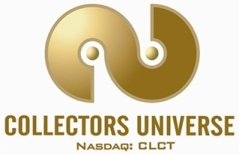 Cohen Private Ventures, which invests the personal capital of hedge fund billionaire Steve Cohen, is teaming with Dan Sundheim's D1 Capital Partners and sports card collector Nat Turner to take collectibles-grading company Collectors Universe Inc. private for about $700 million.
Cohen Private Ventures, which invests the personal capital of hedge fund billionaire Steve Cohen, is teaming with Dan Sundheim's D1 Capital Partners and sports card collector Nat Turner to take collectibles-grading company Collectors Universe Inc. private for about $700 million.
The deal represents a 3.7% premium to Friday's closing price of $72.55. Shares of the Santa Ana, California-based company have more than tripled this year as consumers dedicate more time to hobbies like collecting during quarantine and lockdowns. Collectors Universe provides authentication and grading services to buyers and sellers of memorabilia, including sports cards, coins and vintage autographs.
"Collecting sports cards and connecting with like-minded hobbyists has been a lifelong passion," Turner said in a statement Monday. The investors "are committed to bringing the resources and expertise necessary to expand the company's operational capacity and technological capabilities."
Turner co-founded Flatiron Health Inc., which was sold to Roche Holding AG in 2018, and advertising technology platform Invite Media, which Google bought in 2010.
Cohen Private Ventures makes long-term, primarily direct investments on behalf of Cohen and his family. Cohen, owner of investment adviser Point72 Asset Management and, more recently, the New York Mets, is worth $10.1 billion, according to the Bloomberg Billionaires Index.
One reader noted:
"I was contacted a few weeks ago by a market research firm asking detailed questions about the PCGS business model and the landscape of the numismatic marketplace. I now suspect this was a due diligence effort on the part of the Collectors Universe purchaser."
To read the complete article, see:
Steve Cohen and D1 Capital Team Up For Collectors Universe
(https://www.bloomberg.com/news/articles/2020-11-30/steve-cohen-and-d1-capital-team-up-to-buy-collectors-universe)
Collectors Universe to be Acquired by Investor Group Led by Entrepreneur and Collector Nat Turner for Approximately $700 Million
To read the Collectors Universe press release, see:
(https://www.globenewswire.com/news-release/2020/11/30/2136654/0/en/Collectors-Universe-to-be-Acquired-by-Investor-Group-Led-by-Entrepreneur-and-Collector-Nat-Turner-for-Approximately-700-Million.html)
FEIGENBAUM: COINS ECLIPSED BY SPORTS CARDS
Greysheet publisher (and E-Sylum sponsor) John Feigenbaum thoughtfully analyzed this week's Collector's Universe news in an article Friday. With permission, here's a lengthy excerpt. Thanks. -Editor
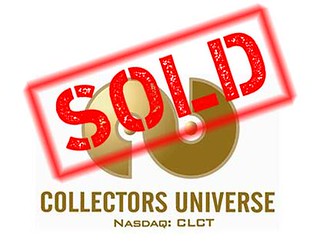 It is both shocking and somehow predictable that the news broke this week that Collector's Universe Inc (CLCT, parent company of PCGS) would be sold to a private investor group for an astonishing price tag of approximately $700 million. The financial details have been reported extensively elsewhere (Bloomberg) so I will reflect on the perspective from numismatics' diminished side of the table.
It is both shocking and somehow predictable that the news broke this week that Collector's Universe Inc (CLCT, parent company of PCGS) would be sold to a private investor group for an astonishing price tag of approximately $700 million. The financial details have been reported extensively elsewhere (Bloomberg) so I will reflect on the perspective from numismatics' diminished side of the table.
One of the most interesting -- dare I say "humbling" -- aspects of this sale is that rare coins are clearly taking a back seat to sports cards. Numismatics has always felt like the mature parent at the teenager birthday party watching over less mature collectibles like baseball cards, or even paper money (much smaller). But the handwriting has been on the wall ever since Joe Orlando took over as President/CEO of CLCT back in October 2017. He'd been at the card side (PSA) of the company for 18 years when he was promoted to the top job, so the Board of Directors clearly knew where the future potential lay for certified collectibles.
Coin dealers I've spoken to this week are experiencing a state of collective shock. When asked about this sale, I heard a range of emotions racing though their minds. For starters, they're wondering how the heck this company could garner such a huge price tag. Those of us in the coin business have watched CLCT stock on a daily basis, much like we watch gold and silver prices. For years, share prices have bounced between $5 and $20. We've bought in the teens and sold when prices approached $20, and then bought again on the dip. This pattern was almost as predictable as the weather. We also naively perceived that the coin market dictated the company's future. Sports cards are interesting, sure, but the "real market" is rare coins, or so we thought.
CLCT was founded as PCGS (Professional Coin Grading Service) in 1986 by David Hall, and other coin dealers, for coin collectors! In the run-up to the dot-com craze of 1990 the company was rebranded Collectors Universe to expand the umbrella into a multitude of other authenticatable items, like gemstones, paper money, and sports cards. Hall was a baseball card collector so this was a natural, but the focus ALWAYS remained on the coin side of things.
As recently as this year there was news of potential scandals on the card side of things with some trimming and doctoring allegations. In July 2019, the Washington Post reported that FBI was investigating certain aspects of the card industry. Small-minded coin professionals like myself sat back in their chairs, arms folded, with a collective harrumph. This house of cards -- pun intended -- would soon collapse.
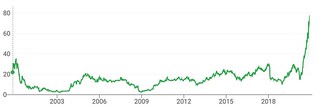 Coins were clearly the big boy in the room, we all thought, but something changed in 2020. Blame it on COVID (why not??) or credit the trend-setters and trend-spotters, but the market for collectible cards is clearly ON FIRE. I'm guessing Mr. Orlando knew it all along. Coin collecting will always be somewhat of a niche industry. We don't have dedicated media channels like ESPN with 24-hour coverage peripheral to our hobby. Sports and the personalities around them are a huge part of 21st century culture. Coins are not. During covid, most collectible categories performed well, but cards rocketed in demand and well-heeled collectors got very interested in the authentication side of the hobby. Collectible comic books are also similarly red-hot right now. I am told by a reliable source that the CGC division of Certified Collectibles Group (CCG) is growing much faster in revenue than numismatic certification at either NGC or PCGS.
Coins were clearly the big boy in the room, we all thought, but something changed in 2020. Blame it on COVID (why not??) or credit the trend-setters and trend-spotters, but the market for collectible cards is clearly ON FIRE. I'm guessing Mr. Orlando knew it all along. Coin collecting will always be somewhat of a niche industry. We don't have dedicated media channels like ESPN with 24-hour coverage peripheral to our hobby. Sports and the personalities around them are a huge part of 21st century culture. Coins are not. During covid, most collectible categories performed well, but cards rocketed in demand and well-heeled collectors got very interested in the authentication side of the hobby. Collectible comic books are also similarly red-hot right now. I am told by a reliable source that the CGC division of Certified Collectibles Group (CCG) is growing much faster in revenue than numismatic certification at either NGC or PCGS.
I had a front-row seat to the 2020 rise of card collecting right here in my cul-de-sac, where a neighbor's teenage son dove deep into dealing basketball cards on eBay with his Dad's backing, building up a five-figure inventory with several cards in the thousand-dollar range. It's exactly the same collecting-and-trading excitement the coin market has seen at different stages over the years, but on steroids with today's online platforms and third-party grading services.
Earlier head-scratching personnel changes at PCGS make more sense now. Coins were taking a back seat. One question now is whether PGCS will stay for the ride or be spun out as an independent company. Anything is possible when Wall Street scrutinizes the numbers. If they choose to disinvest, then cutbacks, layoffs and a sale could be in the works at PCGS. If they choose to invest, new and revamped platforms and products could come along. Improved websites? CoinFacts on steroids? AI-powered mobile apps? Only time will tell. Maybe we'll get that grading robot after all. -Editor

Progressional Coin Grading Service Working in Tandem With Robot
To read the complete article, see:
Parent Company of PCGS to Sell for $700 Million
(https://www.greysheet.com/news/story/parent-company-of-pcgs-to-sell-for-700-million)
To read the earlier E-Sylum article, see:
APRIL FOOLS 2020
(https://www.coinbooks.org/v23/esylum_v23n14a12.html)
Here's a related story from Friday's Washington Post. -Editor
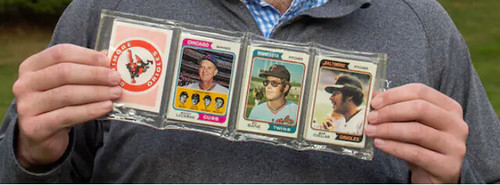
When Eddie Healy was laid off from his job in July while juggling night classes at the University of Maryland law school, he had newfound time to sort through his late father's old baseball cards. The perfect pandemic project, a task Healy, 30, had been looking forward to checking off his to-do list for months, brought back good memories and even produced some buried treasure.
As he picked through the items in the storage tub containing his dad's collection, Healy uncovered sheets of glued 1969 Topps cards and a separate binder of Orioles cards and autographs from the late 1960s. He also found a couple dozen unopened 1974 Topps rack packs, with the cards of Hall of Famers Dave Winfield, Mike Schmidt and Reggie Jackson visible through the cellophane wrapper.
Healy sought a second opinion from a few memorabilia stores in the area. One showed minor interest in his cards. Another told him that 1974 wasn't a great year for Topps, and that rack packs in general weren't that valuable. Healy's own research, which included logging about 100 sales of rack packs by various auction houses over the last 20 years, suggested otherwise. Healy created graphs from his data that showed 1974 Topps rack pack sale prices were at an all-time high, and that the average sale price had jumped 300 percent from five years ago.
"The interest in the hobby overall has increased dramatically over the last year or two," Brian Dwyer, president of Robert Edward Auctions, said in a phone interview. "The segment of unopened material, be that boxes or packs, the interest in that part of the hobby has really ballooned. We have seen more and more people getting into collecting unopened material."
REA's latest auction features 23 rack packs from Healy's dad's collection. They're available in four lots of five and three separate lots for the packs featuring the visible Schmidt, Jackson and Winfield cards, as those players have rabid collector bases. As of Thursday afternoon, bidding for the seven lots, which ends Sunday, totaled more than $16,000.
To read the complete article, see:
A laid-off law student found treasure in his late dad's baseball cards
(https://www.washingtonpost.com/sports/2020/12/04/baseball-cards-auction-pandemic/)
To read earlier E-Sylum articles, see:
COLLECTORS UNIVERSE TERMINATES DAVID HALL
(https://www.coinbooks.org/v21/esylum_v21n38a16.html)
LOOSE CHANGE: JUNE 16, 2019 : Sports Card Doctoring and Conservation
(https://www.coinbooks.org/v22/esylum_v22n24a36.html)
FBI INVESTIGATING BASEBALL CARD DOCTORING
(https://www.coinbooks.org/v22/esylum_v22n29a30.html)
LOOSE CHANGE: OCTOBER 4, 2020 : Sports Cards' Biggest Boom
(https://www.coinbooks.org/v23/esylum_v23n40a32.html)
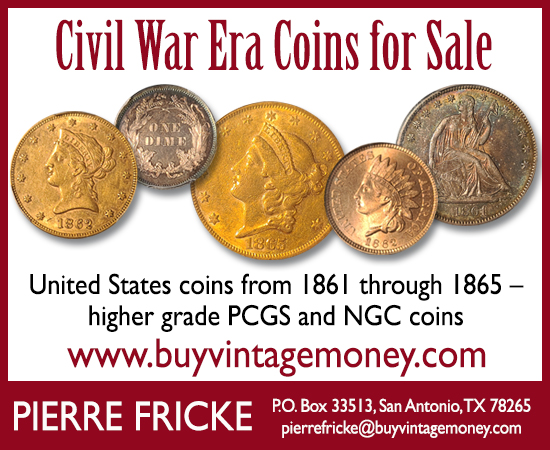
NOTES FROM E-SYLUM READERS: DECEMBER 6, 2020
More on Dr. Gregory Brunk
Eric Hodge writes:
"I was sad to read of the death of Greg Brunk in your latest issue of The E-Sylum. I have never met Greg in person but have communicated by email. In 2014 Harry Manville asked Greg to contact me regarding any updates to Greg's book on world Countermarks, for the chapters concerning UK merchant countermarked dollars. This we did throughout 2015. He was such a gentleman and not only received my input with great thanks but also supplied me with thousands of scans and copies from his files of UK merchant countermarked dollars. Nothing was too much for him, though he always seemed to be having computer problems. His eyesight too created difficulties for him but he soldiered on regardless. His work output was prolific, it will be a sorry state of affairs if his updates were lost to numismatics. I am honoured to have known him, even for such a short time."
To read earlier E-Sylum articles, see:
MORE ON THE "MODEL ARTIST'S" THEATER
(https://www.coinbooks.org/esylum_v16n21a10.html)
BRUNK MERCHANT COUNTERMARKS PUBLISHER SOUGHT
(https://www.coinbooks.org/v21/esylum_v21n35a08.html)
GREGORY G. BRUNK (1949-2020)
(https://www.coinbooks.org/v23/esylum_v23n48a07.html)
Early Digital Photography in a Numismatic Publication
Bob Van Arsdell writes:
"I believe Spink and Son in London should also be credited with an early use of digital photography in a numismatic publication. They ran an article in the June 1993 issue of the Numismatic Circular that carried a digital image. The article's available on line. The technical details of the digital image capture and processing are noted in the last two paragraphs of the article."
Here's the description and a link to the article. Thanks! -Editor
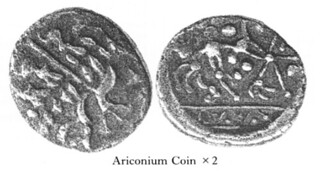 On a different note: those who follow progress in the imaging sciences may be interested to know that the original illustration of the Ariconium coin used in this article was produced entirely by electronic means. The coin was scanned directly using a Hewlett-Packard Scanjet IIC flatbed scanner at 400dpi. The digital file was then adjusted for tone quality and unsharp masked using Adobe Photoshop 3.5 in an Apple Macintosh IIci computer. The image was compressed to 300dpi, dithered and bitmapped; the resulting file was printed on an Apple Laserwriter NT.
On a different note: those who follow progress in the imaging sciences may be interested to know that the original illustration of the Ariconium coin used in this article was produced entirely by electronic means. The coin was scanned directly using a Hewlett-Packard Scanjet IIC flatbed scanner at 400dpi. The digital file was then adjusted for tone quality and unsharp masked using Adobe Photoshop 3.5 in an Apple Macintosh IIci computer. The image was compressed to 300dpi, dithered and bitmapped; the resulting file was printed on an Apple Laserwriter NT.
To read Bob's Spink Numismatic Circular article on his website, see:
Am Anomalous Yarmouth Stater
(https://vanarsdellcelticcoinageofbritain.com/articles-numismatic_ccb3/van_arsdell_1993b_ccb3.html)
To read the earlier E-Sylum articles, see:
DIGITAL PHOTOGRAPHY: A NUMISMATIC GAME-CHANGER
(https://www.coinbooks.org/v23/esylum_v23n47a11.html)
NGC PHOTO PROOF HISTORY
(https://www.coinbooks.org/v23/esylum_v23n48a14.html)
Frozen Dates
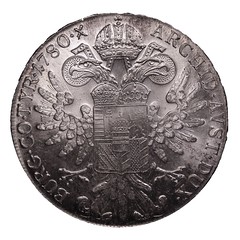 Regarding Dick Johnson's Vocabulary term "Obsessive Date"
Martin Purdy writes:
Regarding Dick Johnson's Vocabulary term "Obsessive Date"
Martin Purdy writes:
"I've heard neither of these terms before - "frozen date" is the term I'm more used to, with regard to the Maria Theresa thalers, 1967 English pennies, etc. You live and learn!"
Indeed - live and learn. Thanks, everyone. -Editor
To read the earlier E-Sylum article, see:
VOCABULARY TERM: OBSESSIVE DATE
(https://www.coinbooks.org/v23/esylum_v23n48a16.html)
ANA Member Numbers
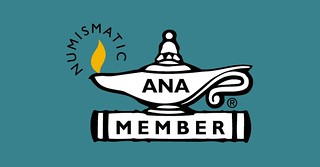 Regarding the mention in a quoted article last week about "the 26,000 members of the American Numismatic Association,"
Joe Boling writes:
Regarding the mention in a quoted article last week about "the 26,000 members of the American Numismatic Association,"
Joe Boling writes:
"Be aware that the last monthly membership count showed ANA membership at 29,887, up from 29,684 in September."
Thanks! Nice to see some growth. -Editor
To read the earlier E-Sylum article, see:
WHO WILL MISS THE COINS WHEN THEY'RE GONE?
(https://www.coinbooks.org/v23/esylum_v23n48a33.html)
Gold Street and Thousand Dollar Road
NBS President Tom Harrison writes:
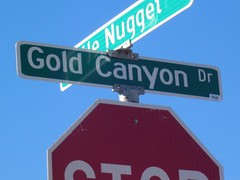 "Nearly 40 years ago we built our dream home on Thousand Dollar Road. When people hear our address they rightfully believe this must be in an upscale gated community, however until the last ten years it was a narrow graveled (well minimal gravel) country road. As the story goes the road received its name because nearly 100 years ago the county only allocated $1000 for construction. Over the years people have forgotten my name, but when I mention I live on $1000 Road they suddenly make the connection."
"Nearly 40 years ago we built our dream home on Thousand Dollar Road. When people hear our address they rightfully believe this must be in an upscale gated community, however until the last ten years it was a narrow graveled (well minimal gravel) country road. As the story goes the road received its name because nearly 100 years ago the county only allocated $1000 for construction. Over the years people have forgotten my name, but when I mention I live on $1000 Road they suddenly make the connection."
Gary Dunaier writes:
"There is a Gold Street in lower Manhattan. Technically, it may not count because in this case "Gold" refers to flowers, not money. Gold Street is one block away from 140 William Street, which served as the headquarters for the American Numismatic Society from 2003 to 2008."
Thanks! I wasn't aware of that. Gary passed along this history from the Forgotten New York site. -Editor
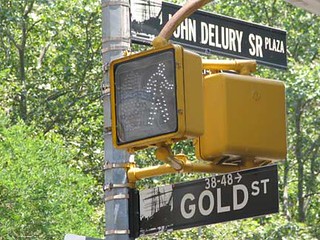 "When the Dutch arrived in the early 1600s they found a field in this general area that was filled with yellow celandine flowers, which they called the gouwe and subsequently the new settlement the Gouwenberg. The British, with their penchant for taking Dutch names and re-molding them for English-speaking ears, simply re-named it Golden Hill – which became the site of a battle between the redcoats and patriots in 1770. After a period in which the street was called Rutgers Hill, for patriot and Tammany politician Henry Rutgers (who owned vast land holdings in Manhattan), it eventually reverted to simply Gold Street. Fittingly the Federal Reserve Bank of New York (lots of gold there) is a block away, at 33 Liberty Street."
"When the Dutch arrived in the early 1600s they found a field in this general area that was filled with yellow celandine flowers, which they called the gouwe and subsequently the new settlement the Gouwenberg. The British, with their penchant for taking Dutch names and re-molding them for English-speaking ears, simply re-named it Golden Hill – which became the site of a battle between the redcoats and patriots in 1770. After a period in which the street was called Rutgers Hill, for patriot and Tammany politician Henry Rutgers (who owned vast land holdings in Manhattan), it eventually reverted to simply Gold Street. Fittingly the Federal Reserve Bank of New York (lots of gold there) is a block away, at 33 Liberty Street."
To read the complete article, see:
GOLD STREET, MANHATTAN
(https://forgotten-ny.com/2006/07/gold-street-manhattan/)
 So far Tom and Gary are the only ones to respond to my call for money or
numismatic-themed street or place names. Friends of our family once bought a new home on "Mansion Drive", but neighbors petitioned to have it changed to something less showy. So not everyone wants a ritzy-sounding name.
-Editor
So far Tom and Gary are the only ones to respond to my call for money or
numismatic-themed street or place names. Friends of our family once bought a new home on "Mansion Drive", but neighbors petitioned to have it changed to something less showy. So not everyone wants a ritzy-sounding name.
-Editor
To read the earlier E-Sylum article, see:
LOOSE CHANGE: NOVEMBER 29, 2020 : Moneyed Street Names
(https://www.coinbooks.org/v23/esylum_v23n48a34.html)
More on Snowden's Coins of the Bible
David Fanning writes:
"You asked about the first edition of Snowden's "Coins of the Bible." Here is a description from George Kolbe's Sale 67."
1866 Snowden, James Ross. The Coins of the Bible, and Its Money Terms. Philadelphia: Presbyterian Board of Publication, 1864. 72 pages, engravings of ancient coins, "an ancient coining press" and "a steam-coining press" in the text. 32mo: 15.5 x 10 cm. Contemporary black roan and marbled boards, gilt, extremities a little worn, covers loose, internally fine, easily restorable.
(75.00)
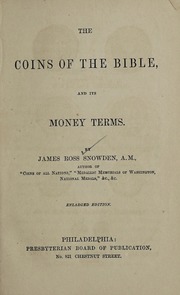 Ex Antiquarian and Numismatic Society of Montreal. The first edition of this very scarce little book, based on a series of articles by Snowden originally appearing in the Sabbath-school Visitor.
Ex Antiquarian and Numismatic Society of Montreal. The first edition of this very scarce little book, based on a series of articles by Snowden originally appearing in the Sabbath-school Visitor.
Thanks. George has handled two examples of the first edition; my example and the one digitized by the Newman Numismatic Portal are the second "Enlarged Edition" (pictured here). -Editor
To read the earlier E-Sylum article, see:
NOTES FROM E-SYLUM READERS: NOVEMBER 22, 2020 : Snowden's 1864 The Coins of the Bible
(https://www.coinbooks.org/v23/club_nbs_esylum_v23n47.html)
More Numismatic Cats
Dave Lange writes:
"Regarding the destructive propensity of our feline friends, I have a story to add. Frasier, my cat pictured atop the Bowers catalogs, had a brother named, of course, Niles. While still a kitten Niles was inclined to gnaw on anything within his reach. My collection of Whitman coin folders was then stored in a wooden armoire which is just barely visible at the far left of the Frasier photo. One day I failed to close this fully, and I came back to find three early folders with their bottoms chewed away, one of them being a rare First Edition folder for Liberty Head Nickels."
Ouch! -Editor
To read the earlier E-Sylum article, see:
NOTES FROM E-SYLUM READERS: NOVEMBER 29, 2020 : Numismatic Cats
(https://www.coinbooks.org/v23/esylum_v23n48a13.html)
Bank of Pittsylvania, VA $20 Note Image Sought
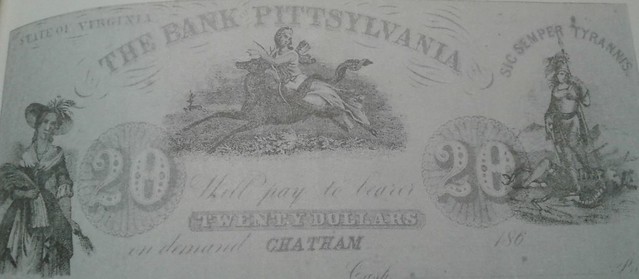
Virginia Numismatic Association member Wesley Smith writes:
"Have you seen this note? This note was shown in Charles Affleck's book, Obsolete Paper Money of Virginia Vol. 2, on page 50.
"I'm working on a DVD about the history of paper money (1690 to The Civil War). I will pay $100.00 for a good digital image and permission to use on the DVD.
"Appreciate any help; please call (501) 472-3800, if you receive a message leave a good time to return your call. Thank you and happy hunting."
Can anyone help? -Editor
Cambodia Coin or Amulet?
Howard A. Daniel III writes:
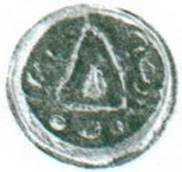 "This piece was sent to me in 2003 from a European collector. The piece below with an image of the reverse was recently sent to me this year.
Both owners bought them from their sources as Cambodian but I cannot find a Cambodia specialist who will verify it or describe the image to
me.
"This piece was sent to me in 2003 from a European collector. The piece below with an image of the reverse was recently sent to me this year.
Both owners bought them from their sources as Cambodian but I cannot find a Cambodia specialist who will verify it or describe the image to
me.
"My description is a total guesstimate. The center figure in the triangle could be Buddhist monk who has passed away and is wrapped up to be preserved or to be cremated. The triangle could be a tomb or an oven. The left figure could be a kneeling monk and the right figure could be a Garuda or another bird. The three dots could signify the three different stages the monk reached before he passed or have another Buddhist meaning. There are several threes in Buddhism.
"Both uniface pieces are silver and weigh about 1 gram and have an 11 millimeter diameter. The 1 gram weight is close to 2 Pe for a Cambodian coin, which is a common weight for a coin before the mid to late 1800s. The pieces are both uniface and have a strong appearance of being Cambodian but there are other pieces with other designs which have been reported to be fantasies and even made outside of Cambodia.
"If anyone has any knowledge about this piece, please contact me at HADANIEL3@MSN.COM."
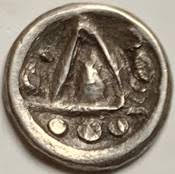
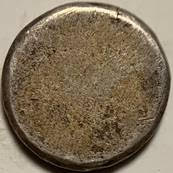
Interesting! Can anyone help? -Editor
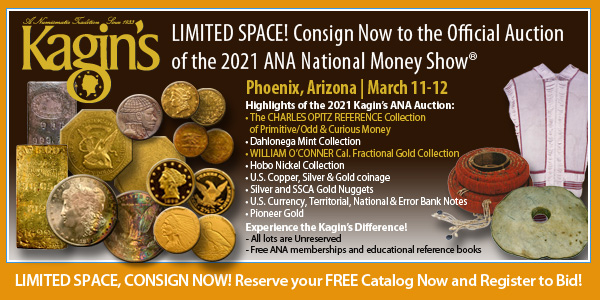
MORE COINS IN LUCITE
Dave Lange writes:
"I'll add something to the growing gallery of Lucite-embedded coins, though I believe you ran these images several years ago. I have a lucite paperweight from 1960 commemorating the 60th anniversary of the Beistle Company, maker of novelty paper products and, of course, the National Coin Albums."
Dave's correct - we ran these images in November, 2014. Well worth revisiting. -Editor
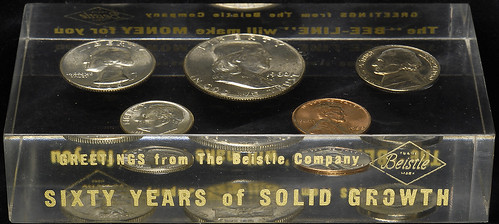
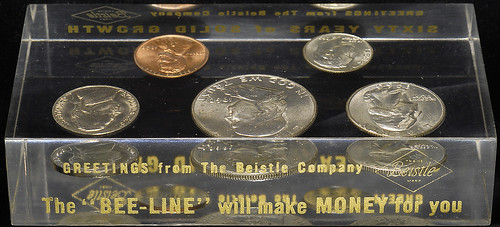
Dave Schenkman writes:
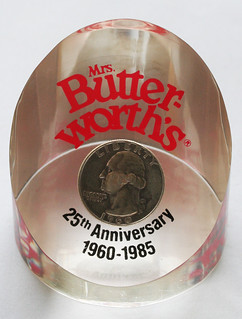 "The article about Lucite holders reminded me of two items that have been sitting on my bookshelves for years. One, from Temple Industries, has a full set of tokens from Southern Pine Lumber Company of Diboll, Texas. The other contains a medal issued in 1952 by the Indian Head (Maryland) Division, Naval Surface Warfare Center. In the 1970s I lived a couple of miles from this facility.
"The article about Lucite holders reminded me of two items that have been sitting on my bookshelves for years. One, from Temple Industries, has a full set of tokens from Southern Pine Lumber Company of Diboll, Texas. The other contains a medal issued in 1952 by the Indian Head (Maryland) Division, Naval Surface Warfare Center. In the 1970s I lived a couple of miles from this facility.
"And I'm sure you know Mrs. Butter-Worth. The coin is a 1960 quarter. I wonder if anyone collects this sort of thing..."
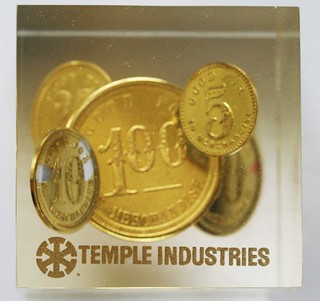
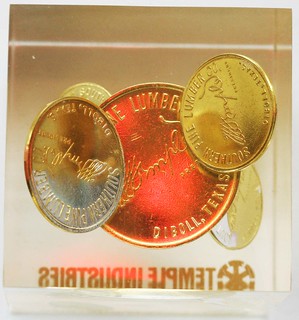
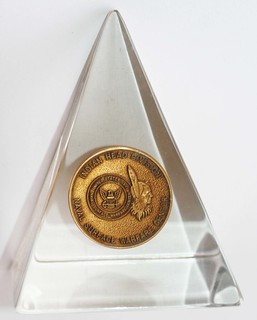
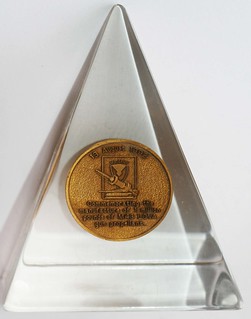
Dave adds:
"I wonder if this will start a new collecting mania. Perhaps NGC and PCGS should start tooling up so these embedded coins can be slabbed. Just think; a slab in a slab."
Phil Iversen writes:
"Some years ago I remember receiving a magazine that sold all kinds of oddball products. One item was a plastic toilet seat embedded with coins. Today on eBay there is one with coins and currency for sale."
Ah, yes - how could I forget those! Good times. These are apparently still being manufactured as Walmart, Wayfair other retail outlets are selling them, so somebody must be out there buying them. Thanks, everyone! -Editor
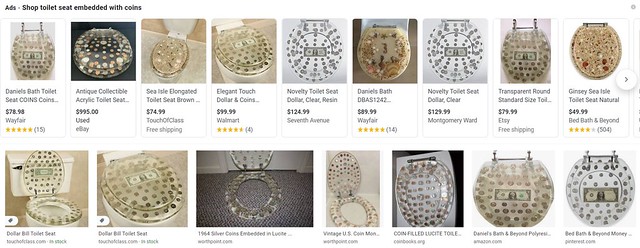
To read the earlier E-Sylum articles, see:
MORE LUCITE-ENCASED COINS: SPELLMAN, BEISTLE
(https://www.coinbooks.org/esylum_v17n49a15.html)
COINS IN LUCITE
(https://www.coinbooks.org/v23/esylum_v23n48a11.html)
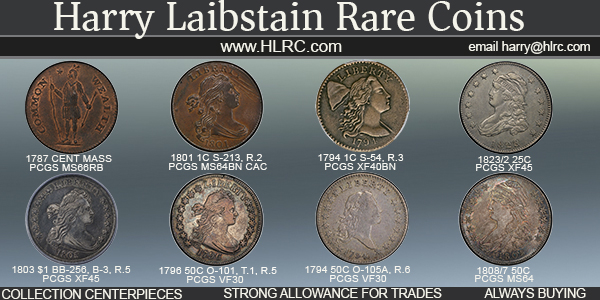
RENEWED QUERY: A ZERBE-HEEREN CONNECTION?
Bill Hyder submitted this question for our readers, building on an earlier unresolved query. -Editor
Robert Jesinger posed a query in the July 8, 2018 E-Sylum about an enigmatic medal he had acquired that seemed to be a Bryan related piece tied to Farran Zerbe and the Heeren Bros. of Pittsburgh.
I have included two images. The first is a Bryan/Zerbe medal I just bought, the second is the Bob Jesinger piece. Both are cast white metal, mine is bronzed.
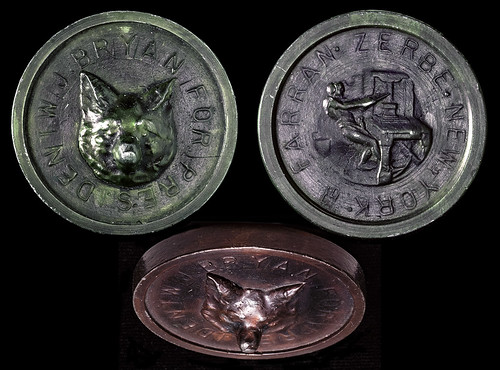
Bill Hyder's medal
The obverses (with the fox head) were cast from the same mold. The reverses were cast from the same base mold with different images in the center. The lettering matches with the exception of what appears to be a signature character or something else after New York on my piece. On the second piece it has been removed (in the mold). Otherwise, the letters match in size, location, spacing, and other characteristics. The center design on mine is a printer at a printing press (it was described as a coining press, but it is not). I suspect it is a logo or a design from another medal that I have not identified so far. The second piece reproduces the Heeren Brothers anniversary souvenir medals. The dates above and below the word SOUVENIR have been removed.
The lettering appears to have been placed in the mold using typesetter's type or some other lettering set. The square bases of the type are visible in an overlapping sequence in several instances.
The fox head on the obverse likely is made from the same device that made the fox head on two 1896 medals that were unknown or not seen by Zerbe when he wrote his 1926 Bryan money article. Schorenstein did catalog one of the two fox head cast pieces with a 16 to 1 reverse (SCH-920). Another with a wheel on the reverse was sold by Stacks Bowers in 2009. The fox heads on the two Zerbe pieces are from the same mold. The two 1896 medals are the same size, but whether all four are the product of the same positive hub I cannot say as I have not personally examined either of the 1896 pieces.
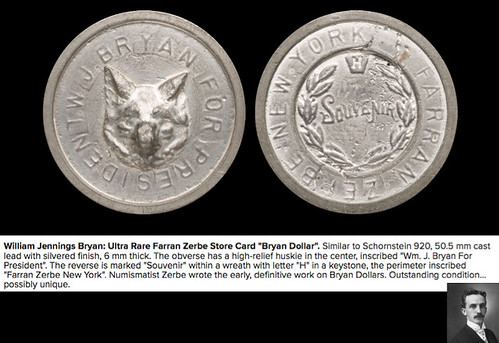
Bob Jesinger's medal
The two Zerbe pieces pictured here have been linked to the Bryan campaign, but I believe they date to post 1926 (when Zerbe's catalog of Bryan money was published in The Numismatist) and most likely 1929 after Zerbe relocated to New York.
I have three working hypotheses:
First: Zerbe had these made for some reason.
Second: These were made for some reason to honor Zerbe, celebrate his Chase Manhattan Bank partnership, etc.
Third: They are satirical pieces comparing Zerbe to Bryan (never stops promoting himself, silver foxes, etc.).
Any help or leads will be much appreciated.
Zerbe certainly knew the Heeren brothers as they were in Pittsburgh, at least he would have known their business since they struck medals.
What do readers think? Can anyone help? -Editor
To read the earlier E-Sylum article, see:
QUERY: A ZERBE-HEEREN CONNECTION?
(https://www.coinbooks.org/v21/esylum_v21n27a19.html)
THE BOOK BAZARRE
VOCABULARY TERM: OPEN FACE DIE
Dick Johnson submitted this entry from his Encyclopedia of Coin and Medal Terminology. Thanks! -Editor
Open Face Die. A striking die used without collar or restraining ring. Open face dies are suitable for multiple striking and are shaped like the diestock from which they are cut, their image being engraved into the smoothed flat top of the diestock cut to proper size; the image occupies the central portion of the die's top surface with a wide margin surrounding the design.
Extremely versatile, open face dies can easily be used in most medal presses, and are adequate for all size struck medals one-half inch and larger; they are particularly advantageous for all medals too large to be coined – over 2 ? inches in diameter – up to struck medallions six inches in diameter. They cannot be used for coins.
History. Open face dies came into use during the French development of the art medal in the 1880s. They were the direct result of larger and stronger presses that could accommodate the striking of larger pieces. Open face dies allowed large medals to be struck rather than cast for the first time in substantial production runs.
Thus the acceptance of open face dies spread to countries with active medal plants and their use was universal by the first decade of the 20th century. This important development of a large size striking die – along with the reducing pantograph from oversize modeled relief sculpture for the medal design – were the three major factors leading to the modern art medal.
Open face versus collar dies. All dies are made for a specific striking process. The process determines the kind of press and the press determines the kind of die. Open face dies are in contrast to collar dies (also called coining dies) that are machined to the requirements of the coining press and the use of the collar. There is no margin on a coining die, its striking surface is at the end of a long neck that fits within the opening of the collar.
The circumference of the coining die – nearly the same as the diameter of the struck piece – must be machined within hundredths of an inch smaller than the aperture in the collar. Obverse and reverse dies must enter this aperture – called the coining chamber – strike a blank and retract from this opening.
Open face die characteristics. In contrast, open face dies have no collar, do not have to enter an aperture or opening and have no neck or shoulder; they are not machined to a silhouette to accomplish what coining dies have to accomplish. Open face dies have a flat surface at the top of the die – the design is sunken into this flat top surface within a wide margin.
Open face dies take the shape of the diestock from which they are made, and since most diestock is circular most dies are circular (but diestock and dies can be square, rectangular or even hexagonal). Large open face dies look like small round hat boxes and are, indeed, called box dies in England.
Open face dies are usually twice the diameter of the struck pieces from that die (see chart, Typical Die Diameters). The greater diameter provides greater mass to the die to enable it to strike very large medals (up to six- inch diameter), very heavy thickness in relief or gauge –all under very high pressure. Without such additional mass the dies would not have the strength to do this nor sustain long production runs.
Despite the fact open face dies cannot be used in coining presses, they may, however, be used on a variety of striking presses. This includes hydraulic, knuckle-joint and some punch presses.
Also all coined pieces are usually mechanically fed (obviously all high-speed coining is mechanically fed); all pieces struck from open face dies must be hand fed. Coining is high speed; striking with open face dies is much slower, where a manual operator feeds and ejects struck pieces in synchronization with the cycle of the press.
As a final point of comparison between open face and collar dies, coining requires a pre formed (upset) blank. A blank for open face dies need only be the proper gauge but can be the same size – or somewhat larger – than the intended struck piece. All pieces struck from open face dies must be trimmed.
How open face dies are made. The diemaker must know the process for which a pair of dies are intended, he receives a work order which states the type of press and a diameter to cut the dies. He is also furnished a metal or epoxy pattern (dieshell) from which to cut the die. He will mount the pattern dieshell in the die-engraving pantograph and mount a proper diameter diestock. For an open face die he must choose a diestock wider than the intended diameter of the medal is chosen (see chart).
The pantograph is set to tracing the relief of the pattern, and by means of a long bar this is transferred to the cutting point which mills (cuts) the rises and falls of the relief into to center of the steel diestock. This continues for the full diameter of the pattern, reducing the design in the prescribed ratio to cut the exact diameter required in the diestock. Usually three separate cuts are made to ensure all cavities of the relief pattern are cut into the die. See pantograph.
Open face dies, while they could be handcut, are almost always cut by pantographic reduction. Thus highly detailed designs can be mechanically cut with an assurance of close fidelity to the original design. After the final cut, the die is examined, proved by taking a lead impression, and if satisfactory, the die is hardened by tempering.
Nothing more is done to the die. It is not trimmed to a silhouette to fit a collar as a coining die. It is ready for striking after it has been hardened and normalized. See heat treating.
Orientating open face dies. Once the dies have been inspected, approved, hardened and before they go on a press they can be marked in some way so they line up, so the die alignment of pieces stuck from those dies will have a perfect orientation of their obverse and reverse axis. This can be done in several ways.
For dies that are cut from bar stock they will be round in circumference. Orientating a die is to twist it slightly. They can be scribed or marked or painted on the side to indicate that the 12 o'"clock position of one will match the 12 o'"clock position on the other. The mark, obviously, must be in a position it can be viewed when it is set in a press.
If the orientation is super critical a mechanical device can be created with the pair of open face dies. In the margin on the face of one die – outside the image area of course – can be located a bushing, a hole drilled right into the top margin surface of the die. Into this bushing will be inserted the guide pin. Another hole is drilled into the opposite die in exactly the corresponding position.
This technique, called guide pin and bushing, can be used while the press operates, or if necessary, the guide pin may be removed. Only on open face dies can a guide pin and two bushings be used because of the margin on the face of both dies.
Resulting edges on pieces struck from open face dies. Because there is nothing to restrain the flow of metal when blanks are struck between open face dies, metal extrudes from the edge between the dies. This flange – called flash – grows larger during multiple striking. After the metal is fully struck up this flash is trimmed off. Large round medals can be easily turned on a lathe (with the use of a form mold). Irregularly shaped medals must be trimmed by hand or require a trimming tool (with trimming punch and plate).
For those medals trimmed on a lathe, tool marks, called annular rings, are often seen on the edge running parallel with the sides of the medal. Thus this type of trimming and these marks are diagnostic evidence these pieces were struck with open face dies.
Collars for large medals were used in the 19th century were virtually eliminated by the first decade of the 20th century. Open face dies are now universally used for striking all large medals.
Storage of open face dies. Open face dies have an inherent characteristic – they almost never wear out (their die life is greater than most intended use). Thus dies are excellent for such medal programs that require medals over long periods of time; once the die.
Such dies are placed in a DIE VAULT for storage. They must be treated to prevent rusting and stored in a dehumidified atmosphere. The face of the die must be protected from rusting, if possible it must be kept without exposure to air. This is done by storing with a struck specimen between the dies – one on top of the other – or by placing Cosmolene, petroleum jelly or a plastic cap over the face, and storing these side by side. The intent here is to prevent moisture from reaching the face of any die.
Looking for the meaning of a numismatic word, or the description of a term? Try the Newman Numismatic Portal's Numismatic Dictionary at: https://nnp.wustl.edu/library/dictionary
Or if you would like a printed copy of the complete Encyclopedia, it is available. There are 1,854 terms, on 678 pages, in The Encyclopedia of Coin and Medal Technology. Even running two a week would require more than 19 years to publish them all. If you would like an advance draft of this vital reference work it may be obtained from the author for your check of $50 sent postpaid. Dick Johnson, 139 Thompson Drive, Torrington, CT 06790.

LIEUTENANT GEORGE CARPENTER ARNOLD (1868-1938)
John Lupia submitted the following information from the online draft of his book of numismatic biographies for this week's installment of his series. Thanks! As always, this is an excerpt with the full article and bibliography available online.
This week's subject is Rhode Island coin dealer George Carpenter Arnold. I've added images of the front and back covers of the 12th edition Arnold Numismatic Guide from my numismatic ephemera collection. -Editor
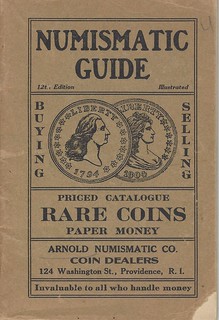 Lieutenant George Carpenter Arnold, (1868-1938), Businessman and Coin dealer. 1st Residence : 238 Adelaide Avenue, Providence, Rhode Island; 2nd Residence : 156 Adelaide Street, Providence, Rhode Island; 3rd Residence : 109 Mathewson Street, Providence, Rhode Island.
Lieutenant George Carpenter Arnold, (1868-1938), Businessman and Coin dealer. 1st Residence : 238 Adelaide Avenue, Providence, Rhode Island; 2nd Residence : 156 Adelaide Street, Providence, Rhode Island; 3rd Residence : 109 Mathewson Street, Providence, Rhode Island.
He was born July 31, 1868, son of William Rhodes Arnold (1839-1912) and Sarah Hill Carpenter Arnold (1843-1920). He married Flora Etta Richards (1870-1960), on December 14, 1892, and they had three children : Lincoln Richards Arnold (1893-1981); Philip Rhodes Arnold (1895-1969); George Carpenter Arnold, Jr. (1896-1989). He was educated at the Episcopal Military Academy of Cheshire, Connecticut and graduated in 1887.
A notice in his biography published by in the National Register of the Society of the Sons of the American Revolution :
"In November, 1887, he joined Company C, First Regiment of Infantry, Rhode Island Militia; was elected Corporal, 1889; Second Lieutenant, 1890; First Lieutenant, 1891-4. For nearly a quarter of a century he was engaged in the worsted yarn business. He is President and Treasurer of the Possnegansett Ice Company; Treasurer and Director of the Arnold Real Estate Company; Treasurer of the Arnold Numismatic Company; Director of the Central Real Estate Company and of the Providence Realty Company; Treasurer of the Motor League of Rhode Island; Treasurer of the Society of Descendants of the Founders of Providence Plantations. He is the author of several books—one treating on Numismatics (of which he is an authority)--—and publisher of the "Genealogical Tree of the Arnold Family, embracing nearly thirty generations, from 1100 A. D."
His ancestry is traced back to the Puritans who left Somersetshire, England in 1635, with William Arnold, cited in Lincoln's History of Hingham, Massachusetts. William Arnold was one of the buyers of land from the American Indians, and his share included most of Providence, Pawtuxet, and Warwick, Rhode Island. He was also a descendent of the Arnold family who fought during the Revolutionary War. His great-great-great-grandfather was James Arnold, Captain-Lieutenant Rhode Island Militia; and his great-great-great-grandfather was James Rhodes, Member of the Rhode Island General Assembly. He used the family residence built on 120 acre (including a 27 acre Lake) of the original colonial grant by his ancestor George Arnold in 1771 at Warwick, as his summer home.
He was ANA member No. 184. He joined the ANA in 1891 and is member no. 68. He collected US, Foreign crowns and ancient coins. He was also a member of the Rhode Island Philatelic Society.
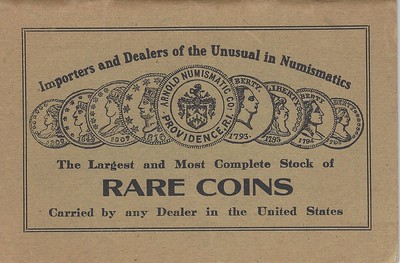
He operated as The Arnold Numismatic Co., Publishers and in the 1907 Ninth edition of Numismatic Guide (38 pages) he is mentioned as the company Treasurer.
He advertised to trade proof sets of 1857, 1863, 1864, 1869, 1870, 1871, 1873, 1875, 1878, 1879, 1880 to 1890 for US $1.00, $3.00, $4.00, and $5.00 gold coins. In another ad in the same 1902 March issue of The Numismatist Arnold solicited to buy the 1779 Admiral Howe, Rhode Island colonial medal. He suggested he would be willing to trade nice half cents and cents for the colonial medal.
He visited the US Mint on Monday, January 6th, 1902 and secured specimens of the newly minted cents, nickels and quarters that were struck on Friday, January 3rd.
He held a coin mail auction sale on April 25th, 1902 which contained a brilliant proof Stella $4.00 gold piece and a remarkably complete 110 varieties set of U.S. half dollars 1794 to 1895.
He was slated to be the Exchange Superintendent for The Numismatist as suggested at in the April issue of 1902.
Together with George Barton and Wendell Phinney he attended the Lyman H. Low and Chapman Brothers coin sales held on June 18th and 19th, 1902. He continued to doing business with the Chapman Brothers throughout his career as a dealer.
He announced in the 1902 August issue of The Numismatist that he is preparing to publish his 6th edition of the Arnold Numismatic Guide, which will be considerably enlarged containing twenty-four pages. In 1907, he published the 9th edition of Numismatic Guide (38 pages), where he calls himself the company Treasurer.
He was Member No. 6840 of the Society of the Sons of the American Revolution and served as the Historian General.
He died at the age of 70 on September 20, 1938 and is buried in the Swan Point Cemetery, Providence, Rhode Island.
To read the complete article, see:
ARNOLD, GEORGE CARPENTER
(http://www.numismaticmall.com/numismaticmall-com/arnold-george-carpenter)
CHAPMAN ENVELOPES: FEBRUARY 12, 1880
Several weeks ago John Lupia suggested a new way to generate ideas for E-Sylum articles - picking a random date to choose items from his massive archive of Chapman Brothers correspondence - nearly every day is represented from 1878 to 1948.
So for grins I took him up on it this week, randomly choosing February 12, 1880 as a starting point. Here's what he came up with from his files, all dated on or close to that date. -Editor
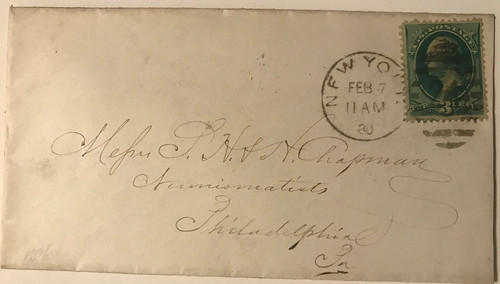
Samuel Carter correspondence six weeks prior to his sole auction.
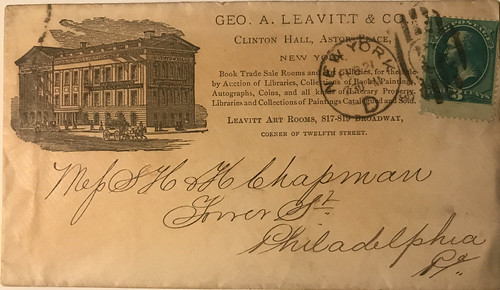
George Leavitt correspondence from February 21st. Nice envelope.
For more on George Leavitt , see:
LEAVITT, GEORGE AYER
(http://www.numismaticmall.com/numismaticmall-com/leavitt-george-ayer)
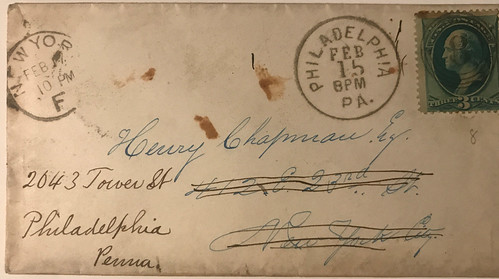
This letter postmarked February 10 (New York) and February 15 (Philadelphia) took a roundabout route to its destination.
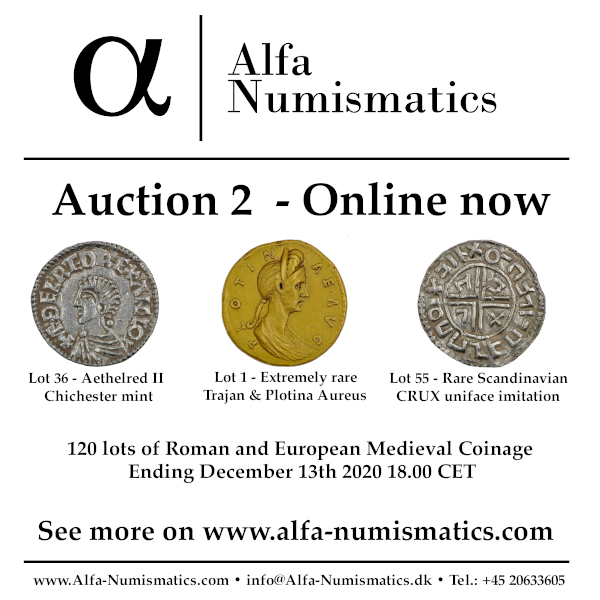
HARVEY STACK'S NUMISMATIC FAMILY, PART 84
The latest article in Harvey Stack's blog series discusses the 1981 Harold J. Bareford sale of U.S. and English coins. Thanks, Harvey! -Editor
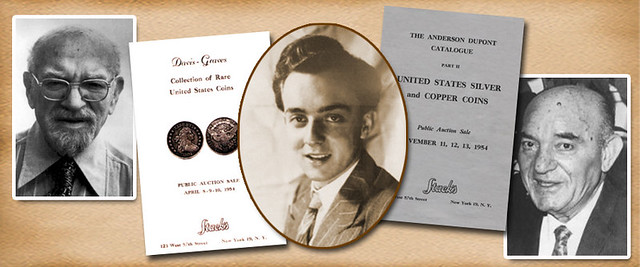
As I wrote in my article covering 1978, Harold J. Bareford was a connoisseur of premium rare coins. He was willing to wait until he could find the proper example that pleased his discerning eye and passed his personal evaluation. During the decades he collected, he looked for the finest, and when he found it, he competed heavily to add each special coin to his collection. He owned many coins with lengthy pedigrees, for he felt that those who collected before him, who cherished beautiful, and rare coins as he did, also shared his goal of purchasing superior examples. Quality, rarity, strike, magnificent toning, and great eye appeal were the guideposts he set for his cabinet. He was successful, as shown in his December 1978 sale, and he would be even more so in the second sale of his collection, which we at Stack's were pleased to present in October 1981. His greatest rarity was his Class I silver dollar, the "King of American Coins," known as the Dexter-Bareford specimen.
As one of the founders of the Metropolitan New York Numismatic Convention, he served as president for a number of years, and was the annual toastmaster at their concluding banquet. He encouraged new collectors old and young to see special exhibits and displays as well as attend lectures, to teach them more about numismatics. Harold J. Bareford earned the title of Dean of Metropolitan New York Collectors, a title he truly deserved.
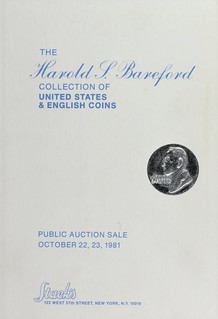 Stack's October 1981 sale of his United States coins (along with a specialized selection of British coins) was so spectacular that it attracted buyers from all over the country, all trying to own a coin or two from this fabulous collection. There were just 626 coins in this part of his collection, and with such fierce competition, few were able to buy many. This sale, though small, set the stage for Stack's to receive consignments to auction from other landmark collections.
Stack's October 1981 sale of his United States coins (along with a specialized selection of British coins) was so spectacular that it attracted buyers from all over the country, all trying to own a coin or two from this fabulous collection. There were just 626 coins in this part of his collection, and with such fierce competition, few were able to buy many. This sale, though small, set the stage for Stack's to receive consignments to auction from other landmark collections.
The United States portion offered a small but high quality group of 25 lots of colonial coins, and was followed by a prize winning set of U.S. half dimes, starting with 1794 and almost complete in Gem Mint State or brilliant Proof. Many of these had been acquired from the William Neil Collection, a landmark collection. Mr. Bareford loved the half dime and dime denominations as their lighter weight led to fewer impairments in the coins.
The dime collection started with the 1796 and was quite complete through to 1916. The quality and beauty of this offering inspired many collectors to start collecting this popular series. It featured Gems and great rarities that were pedigreed to Col. E.H.R. Green, Atwater. Neil, Allenberger, and others. The sale included a superb offering of pattern dimes, over 50 different, many of which had not been seen nor offered for decades. Following were offered twenty-cent pieces, and a selection of early and Liberty Seated quarters and half dollars , all outstanding examples.
The feature coins were then offered for sale. Harold Bareford, loved the early dollars from 1795 to 1804 and tried to assemble as many different dates and varieties as he could. Though these were made for such a short time, the Bareford catalog offered some 21 early dollars that attracted strong competition from bidders.
The highlight of the collection was the magnificent Class I 1804 silver dollar, a Proof that offered beautiful toning and a super strike. It had been purchased by Bareford in 1950, at a private sale. When sold in the October 1981 Bareford sale it realized $280,000. After the audience applauded the sale of the coin, the room calmed down and a group of exceptional Liberty Seated dollars was sold, including three Carson City issues. This concluded the U.S. coins portion of the sale.
The balance of the sale was dedicated to the offering of an outstanding collection of the coins of Great Britain, commencing in 700 B.C. and running to the early 1800s. Harold Bareford had been in the U.S. Navy, during the Second World War, and visited dealers and museums when he was off duty. He was attracted by the English coins, how the money of the Empire influenced all monetary units. He started to assemble some examples while overseas, and continued when he returned to America. He acquired coins in silver and gold, representing most of the Kings and Queens of England, and though he only had about 200 different specimens, his impeccable taste drew to New York a large assemblage of English dealers representing major collectors overseas. The auction for this collection of about 200 pieces took almost three hours and many record prices were established.
To read the complete article, see:
Harvey Stack Remembers: Growing up in a Numismatic Family, Part 84
(https://www.stacksbowers.com/News/Pages/Blogs.aspx?ArticleID=Harvey-Stack-Remembers-84)
To read the earlier E-Sylum article, see:
HARVEY STACK'S NUMISMATIC FAMILY, PART 83
(https://www.coinbooks.org/v23/esylum_v23n47a15.html)
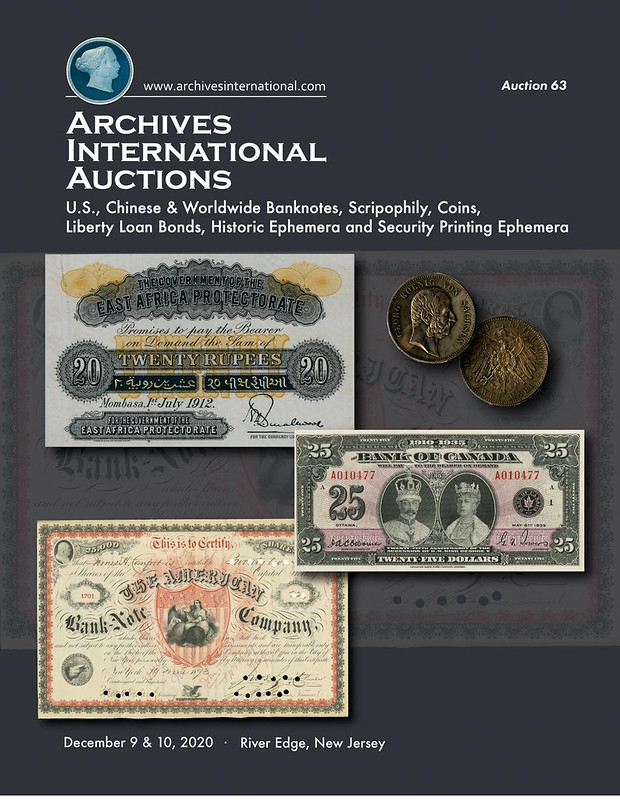
INTELLIGENT COLLECTOR INTERVIEWS BOB SIMPSON
The Winter 2020-2021 issue of Intelligent Collector from Heritage Auctions has a great interview with collector Bob Simpson, whose amazing U.S. coin collection is being sold. Reprinted with permission from The Intelligent Collector magazine. ©2020 Heritage Auctioneers & Galleries Inc. (HA.com). Thanks. -Editor
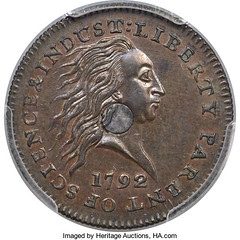
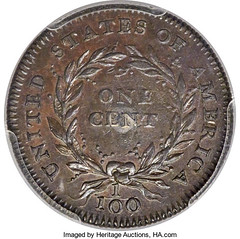
1792 Silver Center cent
Bob Simpson's Sweet Spot
CO-OWNER OF THE TEXAS RANGERS FINDS NOW IS THE TIME TO RELEASE ONE OF THE WORLD'S GREATEST COIN COLLECTIONS
By Robert Wilonsky
What drew you to collecting?
I was probably drawn through the eyes of the child. When we went on a trip, I'd get Daddy to stop in as many towns as he would for me, and I'd get rolls of coins to look at until I could get him to stop again. And so, to that little kid – I was probably 12 – that created value. A lot of values that you pursue as an adult were from your youth. A lot of them. People ask me why I was drawn to oil and gas, because there's no history in my family of it. But when I was little, we were on the plains around Lubbock. Daddy was a cotton farmer. We'd drive by a farm and see a lot of pump jacks, and he said, "Well, you know, I almost bought that farm." And so he created a value in me that pump jacks meant wealth, oil meant wealth. Maybe the reason we moved to it. I don't know.
Or is it possible that a reason you followed your passions and pursuits is because you didn't want to be one of those guys who said, Almost. I almost bought that land. I almost bought that well. I almost bought that coin. You wanted to be the guy who did, in fact, buy those things.
Yeah. In a lot of areas, yeah. I know how to squeeze the trigger while others watch, because that's my nature. I'm a decision-maker, acquirer, captain of the ship. And so, to me, that's fine. The one thing I did learn from Daddy is not to worry about risk, because he was a dryland farmer. That's about the riskiest occupation in the world.
Did you view coin collecting as risky?
I viewed it as the opposite, as a haven more than a risk asset.
When you were 12 and asking your father stop in a town to get you a roll of coin, what were you looking for?
Mercury dimes – the most famous, the 1916-Ds, were being found. Maybe you had a copper penny. You could still get Walking Liberty half-dollars. And you had a chance there to get a fairly expensive one.
So, instead of being a kid buying packs of baseball cards looking for a Mickey Mantle, you were getting rolls of coins.
Yeah. And, remember, in terms of risk, there wasn't any.
Right. You're just swapping out a dollar bill or a $10 bill for a roll of coins.
And you could've made a few hundred bucks. And you're 12.
But how did you know about that at the age of 12?
One of my brothers was a collector. I was the youngest. I used to take some of his coins. But it helped my collection. Actually, though, I paid him back. One thing I learned as a youngster is I tended to always have money one way or another. I had my own chickens or cattle or hogs. My brothers, particularly the oldest one, were always broke.
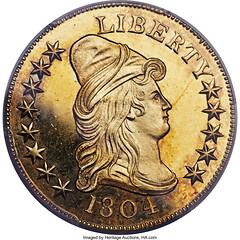
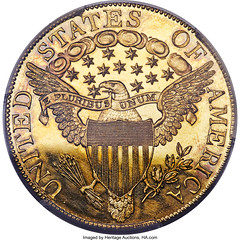
1804 Plain 4 proof eagle
I'm curious how your perception of collecting has changed from that 12-year-old boy in the backseat thumbing through rolls just trying to find that thing that may or may not be, you know, magical, like the bronze 1943- D Lincoln penny which I know you thought you'd found when you were a boy.
I thought, "I'm 16, I think I've got a $40,000 coin, and I'm rich." But it was valueless. I still have it, though. Because I just held the dream. There are some qualities that develop. Try to be the best at what you're doing. And try to acquire the best assets that you can. And I would caution anybody to stay away from the apparent bargains. If you'd like to have a lake lot, it doesn't do you any good to buy a lot a block from the lake just because it's cheap. Whether it's oil and gas or land, I learned over the years to buy the best. And the best is the most expensive. It'll also do the best in the future in terms of its financial performance. It goes hand-in-hand. You're doing yourselves no favor to buy the "bargain."
I assume this applies to coins as well ...
One of my favorite coins is the 1920-S $10 gold piece, probably the finest $10 Indian piece in the world. It's in the set I'm going to keep. But, again, the price was painful. I learned a long time ago that the best usually comes at a price that hurts. And so, I would tell anybody bidding here, if you see the opportunity that's unique to you, it's probably going to hurt to buy it, but you'll never regret it.
The only thing that hurts more is not buying that thing you desperately want.
You'll never regret it. You can always get more money, but some of these opportunities, you can't produce another one. That's what I would share, that wisdom with potential buyers. Here's a guy that's been doing it a long time in a lot of arenas, including the Rangers. We bought that at auction. Usually, the good stuff hurts.
How has your philosophy behind your collecting changed since you were a little boy?
I'm more interested in just outright art – the beauty of the collection, of the coin. And what I would hope somebody would say about my collection is that, first, he had a great eye for beauty as well as history. I think it speaks for itself.
Do you find that you are more unorthodox than most when it comes to collecting?
I was ahead of my time, so to speak. I have my own ability to see beauty. I think it's just the same as artwork. I have artwork. It's just a natural thing. You either kind of got it or you don't.
Did you find that your ability to recognize the beauty of a coin was there from the beginning, or was that a thing you also had to develop?
No, it was natural. You could throw some coins out right here, and you could tell to some degree, just for starters. I just have a good eye for it. I didn't think of charging money, like Certified Acceptance Corporation is doing now. But that's really what they're doing, is to give people assurance.
Let's say you've got a coin graded 66 and a 67 comes along. I can't tell you how many times I've kept my 66 over the 67 or the 67 over the 68. Is the 68 worth more? That big a gap, it probably is. But the 66 to the 67, when the 66 has more eye appeal, you probably can't sell the 67 for more money than the 66.
It's often said that collectors are just temporary custodians of history. Is that how you think of coin collecting?
Yeah. It's true not only with collections but possessions in general. There's a cycle you go through in life, which is: When you're younger, your perspective is infinity and you're immortal, and so you're an accumulator. At some point, it goes the other way, where you think of yourself more as a steward, and then what's the ultimate resolution of this asset. Should I share with other collectors? Leave it to my kids? What am I going to do?
We tend to over-clutter our lives and get beyond our capacity to appreciate what we have. I'm 72, so you reach the age where you're thinking about it differently. You're more aware that you were the custodian. I've kept a lot of my coins that I would encourage my children to never sell. But most we're going to share with the community, that thrill of owning that coin they get they take home and would like to hold, like to own and then spread the joy. And that's sincere.
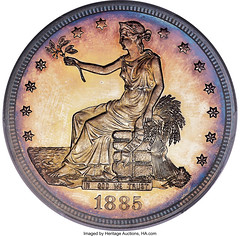
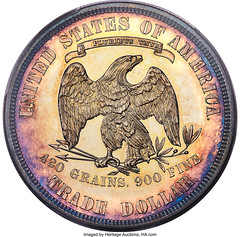
1885 Trade dollar
I keep going back to that 12-year-old in the back seat of the car on the family trips going through coins. I wonder what he would say to the man 60 years later who has acquired such an extraordinary collection and has decided now to part with some of those coins. I wonder if that kid could've believed that he could amass such a remarkable collection.
No, he couldn't have seen that coming. But the concept of giving them back to the community, fellow collectors, is a maturity thing. It would never have crossed his mind. He wouldn't have worried about it. But I think it's the right thing to do. I've been wanting to do this for years, to some extent, but I haven't had time. It is a painful process. I spent days doing it. I am selling some that, on a different day, I might have kept. But there are people that would appreciate some of these coins.
Well, absolutely.
And cherish them where I don't. It's almost just wrong to be that gluttonous.
Well, it is. But that's part of the joy of collecting, right? I mean, as a collector myself, when someone says, "I want to sell you this thing you didn't think you'd ever be able to acquire," it's thrilling. And that's because you will cherish it, and you know that one day you might hand it down or one day you might sell it to somebody else who loves it for the same reasons you do.
There are some coins on down the scale, where you think, maybe, "Is there anybody that loves those?" And there are. It's just a different guy, a different collection, a different viewpoint. There's no chance I could appreciate that many coins. Some of them, I would have three or four of the same coin – a coin that I loved every time I saw it, so I bought it.
The collector's curse. The fear of never seeing something again.
Let somebody else have a go at it. I wasn't buying them because I thought they were going to make me a fortune. I was buying them for their beauty. This is a passion. It's a good thing to do. I hope it continues, and I hope the youngsters pick up the value. Theirs will be a little different because they didn't sit in the back of the car looking through rolls of coins, probably. But theirs will be more of a history, beauty, investment. I'm hoping there are other people out there that have shared this passion as a youngster and would like to fulfill their dreams.
To read the complete issue, see:
HERITAGE AUCTIONS | WINTER 2020-2021 INTELLIGENT COLLECTOR
(http://intelligentcollector.com/mag/pdf-versions/2020-2021-winter-issue.pdf)
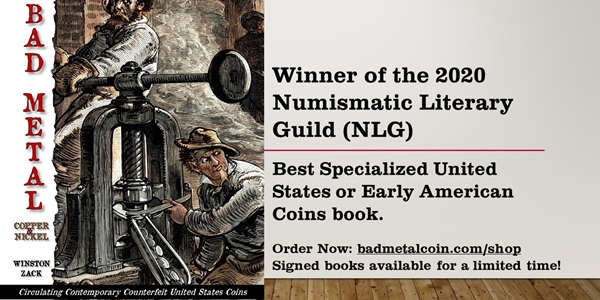
VISUALIZING SARAH SOPHIA BANKS' AFRICAN COINS
Earlier this year Erica Y. Hayes and Kacie L. Wills published this article about their project, Visualizing Sarah Sophia Banks' African Coins, where they examine how the famous collector assembled, organized and thought about her collection. Here's an excerpt - see the complete article online. -Editor
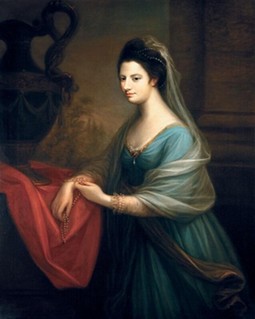 Sarah Sophia Banks (1744-1818), sister of Sir Joseph Banks, famed botanist and President of the Royal Society, was like her brother, an avid collector. Born on October 28, 1744, 1.5 years after her brother, Sarah Sophia spent much of her childhood and teenage years on the family's estate at Revesby Abby, Lincolnshire, where the Banks family grew up collecting antiquities and objects of natural history (Leis, Sarah Sophia Banks: Femininity, Sociability and the Practice of Collecting).
Sarah Sophia Banks (1744-1818), sister of Sir Joseph Banks, famed botanist and President of the Royal Society, was like her brother, an avid collector. Born on October 28, 1744, 1.5 years after her brother, Sarah Sophia spent much of her childhood and teenage years on the family's estate at Revesby Abby, Lincolnshire, where the Banks family grew up collecting antiquities and objects of natural history (Leis, Sarah Sophia Banks: Femininity, Sociability and the Practice of Collecting).
While her brother's collections focused on specimens of natural history, Sarah Sophia collected printed ephemera and contemporary coins, tokens, and medals from around the world. Her collections, amassing to more than 30,000 objects, were presented to the British Museum upon her death in September, 1818, by Sir Joseph's wife, Lady Dorothea Banks. After working through her sizable collections, the curators at the British Museum donated 2,000 out of the 9,000 combined coins, medals, and tokens to the Royal Mint Museum, and a portion of her books and printed ephemera to the British Library.
Although there are direct parallels between the collections of brother and sister, there has been very little analysis done on the connections between their collections. As Anthony Pincott has noted, the "interwoven" lives of brother and sister makes their shared lives, interests, and collecting activities difficult to unravel and analyze together. Sarah Sophia's sizable collections, in particular, have only been noted occasionally and, with the exception of the scholarship by Arlene Leis and Catherine Eagleton, little research has been done on them.
The size and dispersed nature of Sarah Sophia's collection makes it challenging to study. Eagleton notes that "one of the biggest challenges scholars face studying Sarah Sophia Banks' is the quantity of the material—more than 9,000 coins and medals, and 19,000 prints". Our digital project, Exploring the Collections of Sarah Sophia Banks, focuses on two aspects of her collection: her African coins and her scrapbooks on hot air ballooning and other curiosities, with the goal of bringing more attention to her life, while creating an accessible, manageable, and interactive space for the study of the political and social worlds Sarah Sophia documented through her substantial collections.
From 1791, Sarah Sophia kept a detailed list and arrangement of the coins she collected. This list included the provenance of more than 8,500 coins, tokens, and medals in her collection, acquired from 523 individuals, along with a separate list of coins she gave away or exchanged with individuals.
The geographical arrangement of coins in the catalogues are subdivided by the rulers of a particular country, and include transcriptions of the coin's obverse and reverse sides with the currency values of each coin listed. Although this arrangement is now considered common, Eagleton notes this geographical arrangement of the coins was rather new for its time. The practice "had been for collectors to focus on classical coins and medals, and to arrange them alphabetically"
Sarah Sophia's cataloging of coins attempts to organize the world in a drawer, making the world large, but also quite small, in terms of the whole collection's organization by country of issue and use, and then subdivided by authority. Her collection's "organization upholds nationalistic borders," while at the same time seems to mimic "a larger world within which different national cultures interact and overlap"
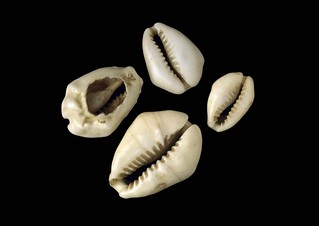 Sarah Sophia's collection of African coins, in particular, illustrates a distinct overlapping perspective on the history and politics of African coinage. At the time of Sarah Sophia's collecting, amid the whirl of the anti-slavery movement, the question of commerce with Africa had taken a center stage.
Sarah Sophia's collection of African coins, in particular, illustrates a distinct overlapping perspective on the history and politics of African coinage. At the time of Sarah Sophia's collecting, amid the whirl of the anti-slavery movement, the question of commerce with Africa had taken a center stage.
Within Sarah Sophia's coin collection are four of West Africa's cowry shells from the Kingdom of Bambara that were gifted to Sarah Sophia by Mungo Park after his return from his travels to Africa.
In our map of Sarah Sophia's African coinage, we have plotted a sample of these African coins in the anticlockwise ordering of the coins reflected in Sarah Sophia's catalogue, with network lines drawn connecting the coins' location of authority to their place of issue and use. By displaying these connections on the map in the order of Sarah Sophia's coin collection, we can visualize how significant Sarah Sophia's unique geographical organization of coins were in portraying these monetary networks of power.
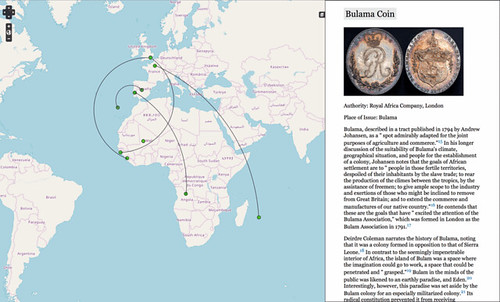
By placing images of the coins on the map and providing georeferenced historical maps of Africa from the eighteenth century for comparison, we can analyze Sarah Sophia's African coin collection through a multi-dimensional lens afforded by a digital platform. Not only can one see the digitized images of the coins we have gathered from the British Museum and the Royal Mint, one can also scroll through them in the same geographical anti-clockwise order that Sarah Sophia organized and listed her coins in her catalogues and intended for users to learn more about them. Drawing attention between the coin's authority to their place of issue, we can see a visual network of Sarah Sophia's metadata within her collections. Additionally, we have been able to make a difficult-to-understand collection of coins more accessible through displaying the information as Sarah Sophia recorded it in her coin catalogues. While the map we have created is one interpretation of the material at hand and illustrates our specific goals of making her coin collections and her catalogues more accessible, it ultimately enables her collection to be viewed and studied in new ways.
To read the complete article, see:
Visualizing Sarah Sophia Banks' African Coins
(https://ideah.pubpub.org/pub/1g0p12m4/release/1)
For more information, see:
Exploring the Collections of Sarah Sophia Banks
(https://www.sarahsophiabanks.com/)

ARCHIVES INTERNATIONAL AUCTION 63
Here is the announcement for the December 9-10, 2020 sale by Archives International Auctions. See last week's article (linked below) for additional selections. Lots of great material in this sale. -Editor
ARCHIVES INTERNATIONAL AUCTIONS OFFERS HUNDREDS OF U.S. AND WORLD BANKNOTES, SCRIPOPHILY, COINS & HISTORIC EPHEMERA AT PUBLIC AUCTION DECEMBER 9 & 10, 2020 IN RIVER EDGE, NEW JERSEY
The auction will be held by Archives International Auctions at their offices in River Edge, N.J.
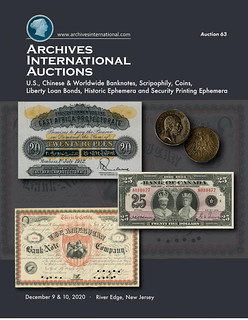 The December 9th and 10th, 2020 auction to be held by Archives International Auctions will also consist of 1592 lots offered over 2 days beginning with 440 lots of Worldwide and Chinese Banknotes and Chinese Scripophily on December 9th followed by 33 lots of World Coins featuring early German Empire and Poland coins from an old estate, all new to the collecting community. The first day ends with 211 lots of U.S. Colonial, Obsolete, Confederate, Small & Large Type, National Banknotes, Historic Ephemera, Security Printing Ephemera, U.S. Liberty Loans and Federal Documents. The second session on December 10th features 905 lots of U.S. & World Scripophily.
The December 9th and 10th, 2020 auction to be held by Archives International Auctions will also consist of 1592 lots offered over 2 days beginning with 440 lots of Worldwide and Chinese Banknotes and Chinese Scripophily on December 9th followed by 33 lots of World Coins featuring early German Empire and Poland coins from an old estate, all new to the collecting community. The first day ends with 211 lots of U.S. Colonial, Obsolete, Confederate, Small & Large Type, National Banknotes, Historic Ephemera, Security Printing Ephemera, U.S. Liberty Loans and Federal Documents. The second session on December 10th features 905 lots of U.S. & World Scripophily.
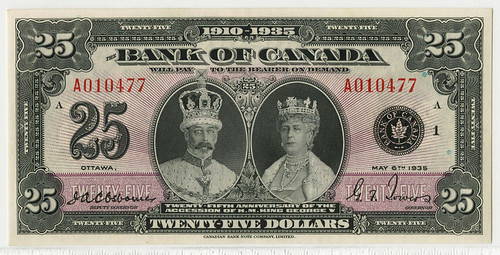
Lot 59: Bank of Canada, 1935 Commemorative, "English Title" High Grade Issued Note.
"During this difficult time period for our country and the world, we are striving to offer our clients and friends items of historical and collecting interest that have been off the market for decades or are new to the collecting world. We hope this auction will add a small amount of enjoyment to everyone's lives", stated Dr. Robert Schwartz , President of Archives International Auctions. "Included in the upcoming auction is a wide variety or rare, interesting and desirable numismatic and historical objects to enhance the collections of every level of collector and dealer".
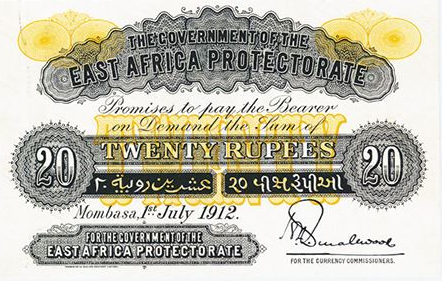
Lot 139: Government of the East Africa Protectorate in Mombasa. 1912. Color Trial Specimen.
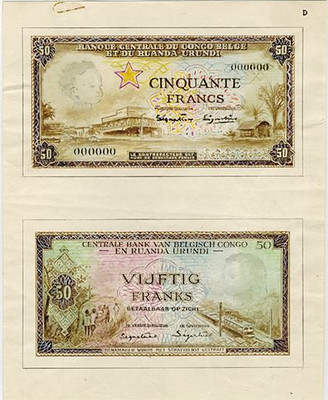 The auction begins with hundreds of World Banknotes from numerous estates and longtime collections with many desirable notes having never been offered previously at auction. A few of the many highlights include a Banque Central du Congo Belge et du Ruanda-Urundi. ND (ca. 1950s) Unique Artist's Essay Face & Back Proof design; a spectacular, Canada, 1935, Bank of Canada Commemorative , "English Title" High Grade Issued Note in Choice Uncirculated 64; China is represented by 43 lots including an extremely rare Kiangse Government Bank, 1907 $1 "Dollar Issue" Banknote in EF 40; an outstanding, East Africa, 1912, Government of the East Africa Protectorate in Mombasa , 20 Rupees, Color Trial Specimen is offered; Germany includes 64 lots of rare Emergency Scrip and Notgeld with many rarely offered at auction; Jordan is highlighted by a Central Bank of Jordan , ND (1977), 20 Dinars, Specimen "Emergency Issue" Banknote grading Gem New 65 PPQ; included with the World banknotes section are hundreds of desirable notes, too numerous to mention. Following the world notes are World coins featuring selections from an old estate with none ever offered previously at auction. Highlights include early 20th century German issues as well as coins from Poland, Curacao and Portugal.
The auction begins with hundreds of World Banknotes from numerous estates and longtime collections with many desirable notes having never been offered previously at auction. A few of the many highlights include a Banque Central du Congo Belge et du Ruanda-Urundi. ND (ca. 1950s) Unique Artist's Essay Face & Back Proof design; a spectacular, Canada, 1935, Bank of Canada Commemorative , "English Title" High Grade Issued Note in Choice Uncirculated 64; China is represented by 43 lots including an extremely rare Kiangse Government Bank, 1907 $1 "Dollar Issue" Banknote in EF 40; an outstanding, East Africa, 1912, Government of the East Africa Protectorate in Mombasa , 20 Rupees, Color Trial Specimen is offered; Germany includes 64 lots of rare Emergency Scrip and Notgeld with many rarely offered at auction; Jordan is highlighted by a Central Bank of Jordan , ND (1977), 20 Dinars, Specimen "Emergency Issue" Banknote grading Gem New 65 PPQ; included with the World banknotes section are hundreds of desirable notes, too numerous to mention. Following the world notes are World coins featuring selections from an old estate with none ever offered previously at auction. Highlights include early 20th century German issues as well as coins from Poland, Curacao and Portugal.
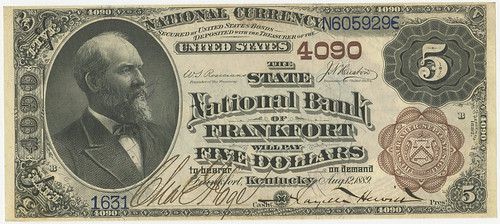
Lot 512: Kentucky, State National Bank of Frankfort, $5, 1882 Brown Back, Ch# 4090, Rosecrans | Houston Signatures
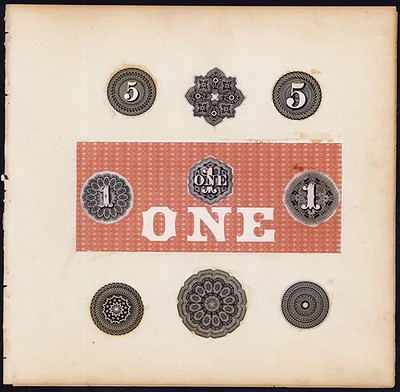 The first day ends with a selection of 211 lots of U.S. Banknotes, Liberty Loan Bonds, Historic and Security Printing Ephemera, including a pair of U.S. Presidential Autographs. Highlights include a $100, F.R.N., Series of 1934 in Superb Gem Unc 67 EPQ, rarely seen this nice; an extremely desirable, 1882 $5 Brown Back from the State National Bank of Frankfort, Kentucky, Ch# 4090 in Choice XF to AU; 4 different Reno, Nevada 1929 National Banknotes as well as 1907 and 1933 Depression Scrip from various states are offered. Security Printing Ephemera includes numerous and desirable Security Printer items including 3 different historic Cyrus Durand artistic vignette sheets from the Stacks "52 Collection" from 2010; a group of James Smillie progress vignette proofs, circa 1850-70's is offered as well as numerous security printer advertising items.
The first day ends with a selection of 211 lots of U.S. Banknotes, Liberty Loan Bonds, Historic and Security Printing Ephemera, including a pair of U.S. Presidential Autographs. Highlights include a $100, F.R.N., Series of 1934 in Superb Gem Unc 67 EPQ, rarely seen this nice; an extremely desirable, 1882 $5 Brown Back from the State National Bank of Frankfort, Kentucky, Ch# 4090 in Choice XF to AU; 4 different Reno, Nevada 1929 National Banknotes as well as 1907 and 1933 Depression Scrip from various states are offered. Security Printing Ephemera includes numerous and desirable Security Printer items including 3 different historic Cyrus Durand artistic vignette sheets from the Stacks "52 Collection" from 2010; a group of James Smillie progress vignette proofs, circa 1850-70's is offered as well as numerous security printer advertising items.
Liberty Loan section features Third, Fourth and Victory Loan bonds highlighted by a $100, Victory Liberty Loan 4 3/4% Convertible Gold Note of 1922-23 issued in 1919; dozens of desirable bonds, checks, revenue imprinted checks and drafts and documents are offered. Ephemera and autographs include a historic 1809 Orleans Territory (Now Louisiana) Land Deed for a tract of land along the Mississippi River as well as 2 additional lots of early Louisiana historic documents; presidential autographs include William Howard Taft, Woodrow Wilson and Warren G. Harding signatures on letters or documents as well as additional fascinating and desirable items.
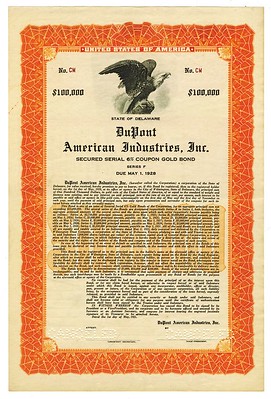 The world notes are followed by 909 lots of U.S. and World Scripophily beginning with automobile and aviation bonds and shares followed by banking, finance, Internet and technology, mining, railroads and hundreds of desirable and rare issued and specimen bonds and shares. Highlights include 47 Automobile and aviation certificates; banking, insurance and finance has over 90 lots including certificates from Goldman Sachs ; Kidder, Peabody; Morgan Stanley; Shearson; and other major financial power houses including a Lehman Brothers Holding stock certificate. Entertainment stocks and bonds include Columbia Pictures; Edison United Phonograph; San Juan Racing Association proof; Walt Disney; and other desirable certificates. Internet, technology and Computers is highlighted by an original AMAZON.COM Specimen and possible IPO certificate with their old logo.
The world notes are followed by 909 lots of U.S. and World Scripophily beginning with automobile and aviation bonds and shares followed by banking, finance, Internet and technology, mining, railroads and hundreds of desirable and rare issued and specimen bonds and shares. Highlights include 47 Automobile and aviation certificates; banking, insurance and finance has over 90 lots including certificates from Goldman Sachs ; Kidder, Peabody; Morgan Stanley; Shearson; and other major financial power houses including a Lehman Brothers Holding stock certificate. Entertainment stocks and bonds include Columbia Pictures; Edison United Phonograph; San Juan Racing Association proof; Walt Disney; and other desirable certificates. Internet, technology and Computers is highlighted by an original AMAZON.COM Specimen and possible IPO certificate with their old logo.
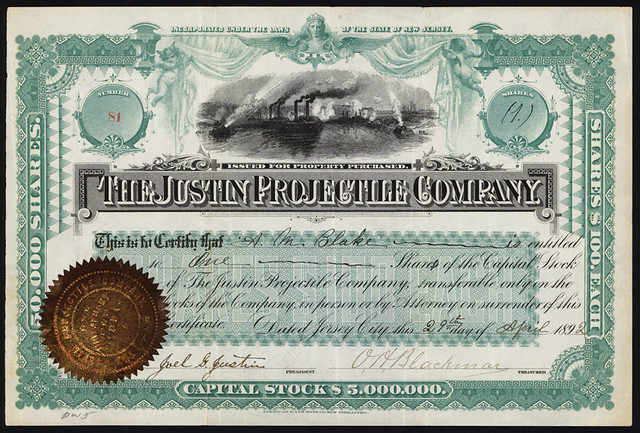
Lot 1061: Justin Projectile Company, 1892 I/U Ammunition Manufacturer Stock Certificate.
World certificates are represented by 59 lots from Argentina to Yugoslavia. Highlights include the Amazon Steam Navigation Co., Ltd, ca.1860-70's specimen issued in England for a Brazilian company; Poland includes 9 lots of specimen certificate rarities; with Switzerland offering 4 different Swiss Confederation, circa 1919 to 1924 and the City of Berne, circa 1920 specimen bond rarities. Industrial and manufacturing is highlighted by an issued and uncancelled " Justin Projectile Company " stock certificate dated 1892 featuring the image of a Civil War Naval Battle scene of iron clad ships shooting cannons and mortars at each other. The company manufactured 3 feet long by 9-inch diameter projectiles filled with nitro-gelatin that blew up the cannon firing it and not much else; 2 different groups of U.S. Steel Corporation Specimen bonds are offered from the 1901 initial formation of the company and 1903. All are specimens and are rare with either 5 or 6 different examples in each lot. Mining is represented by 68 lots and includes certificates from Alaska, Arizona, Georgia, Nevada and many other states. This scripophily section of the auction finishes up with 37 lots of Navigation and Oil & Gas bonds and shares with many desirable certificates.
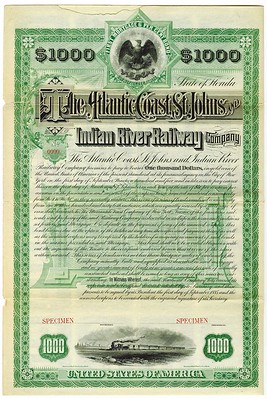 Railroads bonds and shares are offered over 295 exceptional lots of issued and specimen bonds and shares with many rarities including a number of railroad designs, dates and varieties that were previously unknown to the collecting community including a Florida, 1885, Atlantic Coast, St. Johns and Indian River Railway Specimen bond; an Idaho, 1906, Boise Railroad Co., Specimen bond; a Michigan and Canada, 1887, Sault Ste. Marie Bridge Company Specimen rarity and dozens of other rare or discovery certificates. Hundreds of attractive, desirable and rare railroad bonds and shares are offered in the auction. The auction ends with additional city and state bonds; Sugar companies; and ending with various utilitie companies.
Railroads bonds and shares are offered over 295 exceptional lots of issued and specimen bonds and shares with many rarities including a number of railroad designs, dates and varieties that were previously unknown to the collecting community including a Florida, 1885, Atlantic Coast, St. Johns and Indian River Railway Specimen bond; an Idaho, 1906, Boise Railroad Co., Specimen bond; a Michigan and Canada, 1887, Sault Ste. Marie Bridge Company Specimen rarity and dozens of other rare or discovery certificates. Hundreds of attractive, desirable and rare railroad bonds and shares are offered in the auction. The auction ends with additional city and state bonds; Sugar companies; and ending with various utilitie companies.
Previews will be limited and by appointment only and we will be observing strict safety precautions including the wearing of masks and observing social distancing to protect our team as well as our guests. We will do our best to accommodate anyone who desires additional information and photographs. For questions, please call 201-944-4800 or email info@archivesinternational.com
The online catalog for the December 9th and 10th, 2020 auction is on Archives International Auctions' website and can be viewed via the Archives International live bidding platform. It can also be viewed as a Virtual Catalog or downloadable Sale 63 .pdf on our website. To pre-register for Live Internet Bidding , log on to the Archives International Auctions website, at www.ArchivesInternational.com.
Archives International is now working on their Winter and Spring 2021 auctions and are seeking quality consignments for future auctions or outright purchase including U.S. and worldwide banknotes, coins, stocks, bonds, stamps, postal history, historic ephemera, and autographs. To sell or consign one piece or an entire collection, please call AIA at (201) 944-4800; or e-mail them at info@archivesinternational.com
You may also write to Archives International Auctions, at 1060 Main Street, River Edge, NJ 07661, U.S.A. To learn more about Archives International Auctions and the auctions planned for December 9th and 10th, 2020, log on to www.ArchivesInternational.com.
To read the virtual catalog, see:
https://archivesinternational.auctioneersvault.com/catalog/Archivessale63/
To download Auction 63 as a .pdf, see:
Downloadable catalog .pdf
To read the earlier E-Sylum article, see:
ARCHIVES INTERNATIONAL AUCTION 63 SELECTIONS
(https://www.coinbooks.org/v23/esylum_v23n48a22.html)
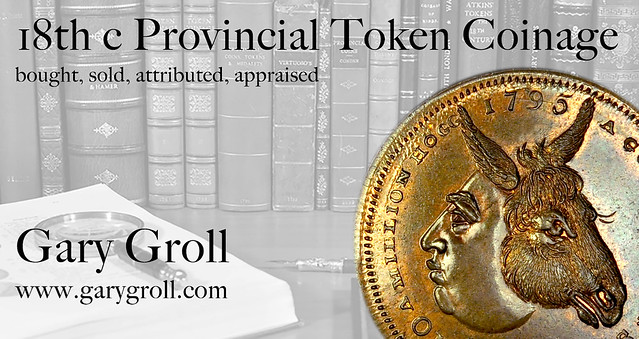
HOLABIRD DECEMBER 2020 SALE SELECTIONS
Here are some items that caught my eye in this month's Holabird sales. -Editor
Lot 1043: Addenda Silver & Gold Mining Company Stock
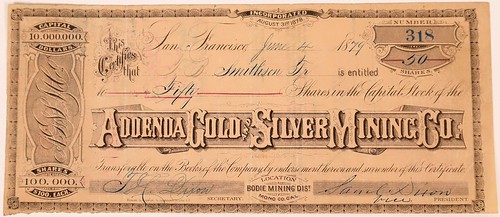
Incorporated in 1878. Cert. #318, issued to T. B. Smithson, Tr. for 50 shares. Signed by Sam'I Dixon, vice president, and T.J.C. Dixon, secretary. No vignette, but fancy monogram logo at left. Black border on tan paper. Printer: Bunker & Lester, S.F. Uncancelled. 4 x 8.25." Datelined San Francisco. Volume 28 of the Engineering and Mining Journal (July-Dec. 1879, pg. 28) states, "This mine is looking well." And the California Journal of Mining and Geology, 3rd Annual Report of the State Mineralogist (June 1883, pg. 92) notes that the Addenda Mine is at the 500' level.
While not numismatic, these historic old stock certificates are great examples of the printer's art and nice ones make great display items. -Editor
To read the complete lot description, see:
Addenda Silver & Gold Mining Company Stock, Bodie, California (123543)
(https://holabirdamericana.liveauctiongroup.com/Addenda-Silver-Gold-Mining-Company-Stock-Bodie-California-123543_i39180561)
Lot 1055: Chieftain Gold and Silver Mining Company Stock
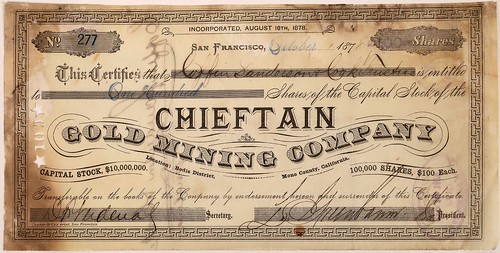
RARE. Number 277 for 100 shares to Coffin, Sanderson & Cool trustees. Signed by JM Verdenal and L Greenebaum president. Directors were Verdenal, Greenebaum, George Kidd, Robert Sherwood, H. Charles. [San Francisco Chronicle, August 18, 1878. This was the only information we found on this company.] "Location: Bodie District, Mono County, California." Crocker & Co., printer. Discoloration shows age on left and top. Small hole top left.
Interesting item. There were so many of these mining companies, it's very hard to keep track of them all. -Editor
To read the complete lot description, see:
Chieftain Gold and Silver Mining Company Stock, Bodie (123558)
(https://holabirdamericana.liveauctiongroup.com/Chieftain-Gold-and-Silver-Mining-Company-Stock-Bodie-123558_i39180573)
Lot 2608: National Bureau of Engraving Stock Certificate
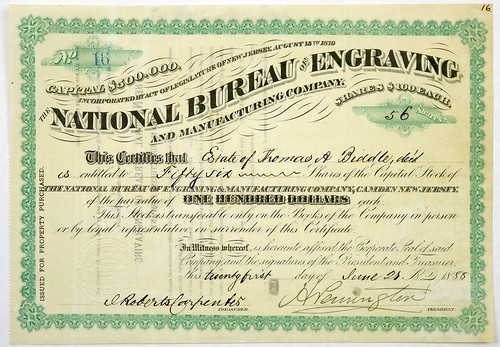
Cert. #16, issued to the estate of Thomas A. Biddle, dec'd. This is a curious certificate. Was this company somehow associated with the U.S. Government? The National Bureau of Engraving dept. of the government printed the U.S. currency. This company incorporated in 1879 and operated at Camden, New Jersey. This company does not show up in the scripophily historical databases, so it is a one off and rare. VF. Uncancelled.
Great question - what was the National Bureau of Engraving? -Editor
To read the complete lot description, see:
National Bureau of Engraving Stock Certificate, 1888 (118717)
(https://holabirdamericana.liveauctiongroup.com/National-Bureau-of-Engraving-Stock-Certificate-1888-118717_i39181840)
Lot 2621: Kunkel's Opera Troupe Counterstamp
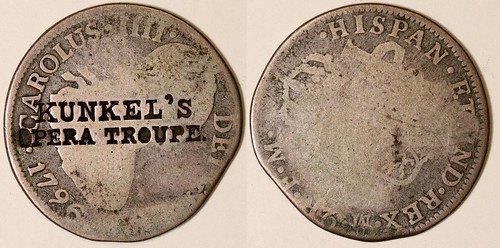
c1869-1861 Kunkle's Opera Troupe counterstamped 1796 2 Reales Mexico City Mint. Rulau MD-86A, Brunk K-347.
Strong strike of a classic merchant counterstamp. -Editor
To read the complete lot description, see:
Kunkel Medal, c1860 (127064)
(https://holabirdamericana.liveauctiongroup.com/Kunkel-Medal-c1860-127064_i39181853)
Lot 2624: Tony Pastor Medal
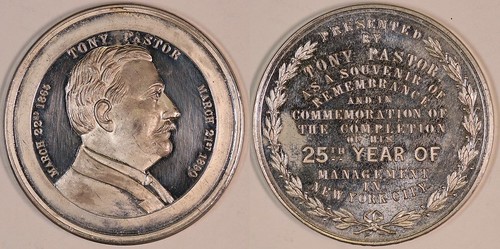
1890 Twenty-fifth anniversary medal presented by Tony Pastor in commemoration of his service to the management of in New York City. Tony Pastor is sometimes called a founding father of American vaudeville. He managed the Germania Theatre in Tammany Hall. Rulau Nyk-90. White Metal, 40mm, Proof-like Unc.
Nice medal for an interesting lesser-known historical figure. -Editor
To read the complete lot description, see:
Pastor Medal, 1890 (127062)
(https://holabirdamericana.liveauctiongroup.com/Pastor-Medal-1890-127062_i39181856)
Lot 2643: Arizona Valley Bus Line Token
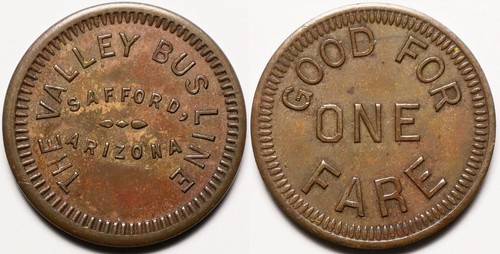
Circa 1930's rare transportation token: "The Valley Bus Line" Safford, Arizona/ Round/ 7mm/ Br/ Reverse: "Good for one fare" r-7
Many transportation tokens such as these are quite rare today. -Editor
To read the complete lot description, see:
Rare Transporation token - The Valley Bus Line (119917)
(https://holabirdamericana.liveauctiongroup.com/Rare-Transporation-token-The-Valley-Bus-Line-119917_i39181875)
Lot 2655: Kentucky Sutler Token
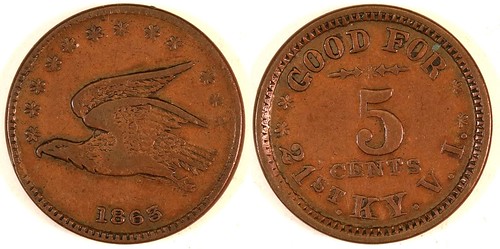
Kentucky sutler token: GOOD FOR / 5 / CENTS / 21ST. KY. V.I. Reverse, flying eagle / 1863. Curto 341, Schenkman KY-21-5C. Copper, 19mm, VF.
Neat flying eagle design. -Editor
To read the complete lot description, see:
Kentucky Sutler Token, 1863 (127075)
(https://holabirdamericana.liveauctiongroup.com/Kentucky-Sutler-Token-1863-127075_i39181887)

NUMISMAGRAM MEDAL SELECTIONS: DECEMBER 2020
Numismagram's Jeremy Bostwick forwarded these highlights from his most recent December upload of new material. In addition to the mix of items below, one will find a particular concentration in Art Nouveau and Art Deco medals, as well as a few items relating to the early days of space exploration. To view all of these new medals, please visit numismagram.com/inventory . -Editor
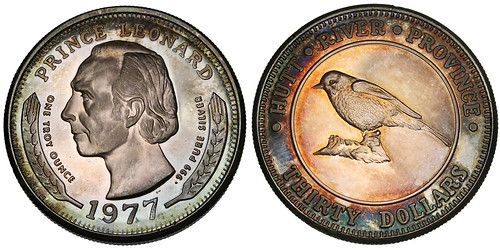
101373 | AUSTRALIA. Hutt River Province. Prince Leonard silver 30 Dollars. Issued 1977 (39mm, 32.64 g, 12h). Bare head of Prince Leonard left; grain ear to left and right / Red robin standing left on rock. Edge: Reeded. KM (X) 8. Gem Proof. Quite deeply toned, with a cobalt nature on the obverse and more of an iridescent mix on the reverse. A difficult early issue from this popular and now defunct micronation, with a mintage of just 1,000 pieces. $165.
Occupying a prominent role within the fascinating topic of "micronations," the Hutt River Province was founded on 21 April 1970 by Leonard Casley, styled as Prince Leonard. Though claiming to be a sovereign state located 354 miles north of Perth in Western Australia, the "principality" was not recognized as such among the nations of the world. Within the world of numismatics, however, quite the opposite is the case, as the Hutt River Province was a prolific issuer of "unofficial" coinage, often featuring topics and themes that weren't otherwise encountered in coins. After "ruling" for 45 years, Prince Leonard abdicated at the age of 91 in favor of his son, Prince Graeme, in 2017; Prince Leonard died just two years later on 13 February 2019. The younger's reign, however, was short-lived, as a massive tax debt had been levied against the principality in the amount of $3 million. On 3 August 2020, the micronation officially ended, bringing an end to one of the most celebrated areas of odd and quirky numismatics.
Gotta love the zany world of micronations. -Editor
To read the complete item description, see:
101373 | AUSTRALIA. Hutt River Province. Prince Leonard silver 30 Dollars.
(https://www.numismagram.com/product-page/101373)
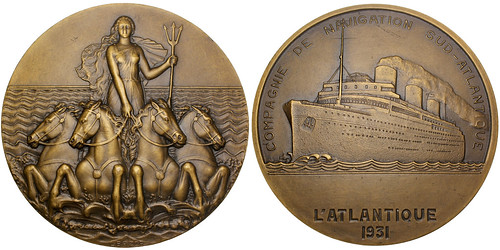
101437 | FRANCE. Compagnie de Navigation Sud-Atlantique Art Deco bronze Medal. Issued 1931. Commemorating the maiden voyage of the Atlantique service line (68mm, 148.87 g, 12h). By L. Bazor in Paris. Venus, holding trident, in facing marine quadriga pulled by four sea horses / COMPAGNIE DE NAVIGATION SUD–ATLANTIQUE, perspective view from the right of the vessel breaking waves left; L'ATLANTIQUE / 1931 in exergue. Edge: «cornucopia» BRONZE. Choice Mint State. Slightly matte brown-bronze surfaces An exceptional Art Deco design by an ever-popular medalist. Rare, especially this attractive. $375.
The grandest and most luxurious passenger ship on the Europe–South America line, the Atlantique herself was in operation for little over two years, with her maiden voyage occurring in September/October 1930, and her demise—caused by a fire while in the English Channel—happening in January 1933. The Art Deco motif of this medal conveys the nature of the ship's interior design, which was heavily influenced by the style.
Great medal. Love Art Deco! -Editor
To read the complete item description, see:
101437 | FRANCE. Compagnie de Navigation Sud-Atlantique Art Deco bronze Medal.
(https://www.numismagram.com/product-page/101437)
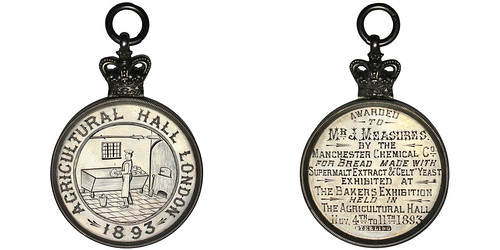
101449 | GREAT BRITAIN. Supermalt Extract & "Celt" Yeast Bread engraved silver Award Medal. Engraved 1893 and awarded to Mr. J. Measures in November (36mm, 19.83 g, 12h). AGRICULTURAL HALL LONDON / 1893, baker standing left, kneading dough in kitchen and baking bread / 'AWARDED / TO / MR J MEASURES / BY THE / MANCHESTER CHEMICAL CO / FOR BREAD MADE WITH / SUPERMALT EXTRACT & "CELT" YEAST / EXHIBITED AT / THE BAKERS EXHIBITION / HELD IN / THE AGRICULTURAL HALL / NOV 4TH TO 11TH 1893' in twelve lines in a variety of fonts. Edge: Encased in bezel, with swiveled crown suspension, loop, and ring at the top. Choice Extremely Fine overall. Some light cleaning. $465.
While most award medals for events such as these are struck, this engaging piece instead is quite elegantly engraved, with great intricacy given to the scene on the obverse as well as the ornate nature of the lettering throughout.
Quite unusual - I can't say I've ever seen another medal for Supermalt Extract, but I imagine a small collection could be made of medals and tokens relating to the making and sale of bread. -Editor
To read the complete item description, see:
101449 | GREAT BRITAIN. Bakers' Exhibition engraved silver Award Medal.
(https://www.numismagram.com/product-page/101449)
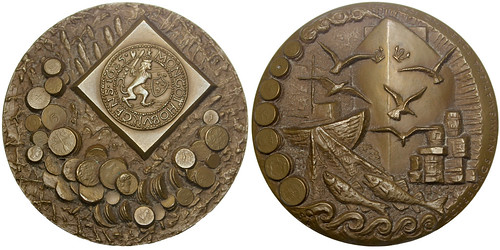
101433 | SWEDEN. Göteborg Numismatic Association bronze Medal Issued 1973. Commemorating the 40th anniversary of the association (56mm, 90.84 g, 12h). By G. Svensson-Lundkvist. Oversized klippe issue in high relief surrounded by numerous other coins in stacks; issues represented include Greek and Roman ancients, some medieval hammered, and modern machine struck coinage / GÖTEBORGS NUMISMATISKA FÖRENING 1943–1973, two ships approaching the docks; seagulls flying in the foreground above two fish; various modern Swedish coins around to left. Edge: MV BRONS 1973. Gem Mint State. Chocolate brown surfaces with incredible relief and detail. $145.
Featuring a wide variety of coinage from ancient to modern, this ambitious design presents great detail and allows the most advanced numismatist a chance to determine as many discernable types as possible.
Agreed - a very busy design that presents a fun challenge for the viewer. -Editor
To read the complete item description, see:
101433 | SWEDEN. Göteborg Numismatic Association bronze Medal.
(https://www.numismagram.com/product-page/101433)
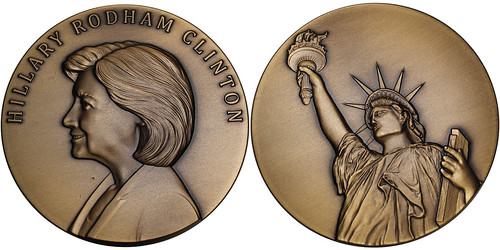
100368 | UNITED STATES. Hillary Rodham Clinton bronze Medal. Issued 2016. Proposed Inaugural Design (70mm, 161.81 g, 12h). By P. Hansen at the Medalcraft mint. HILLARY RODHAM CLINTON, bust left / Upward view of the Statue of Liberty facing slightly left. Edge: Plain. Gem Mint State. Flawless yellow-bronze surfaces. Extremely rare. Includes original purple box of issue along with stand. $975.
The tradition of presidential inaugural medals is long-standing, with the process generally beginning before the election itself has taken place, thus allowing proposed designs to be created and critiqued so that an acceptable rendition is ready by the time of the inauguration. As such, the prototypes of the defeated candidates exist in obviously small quantities, and occupy an extremely interesting place in the arena of 'what if?' Adding further inauspiciousness to this piece is the empty nature to the reverse field—intentionally left blank by the artist in order to allow the Clinton camp a chance to offer input, it can now be viewed as a surprisingly stalled design for a surprisingly stalled campaign.
These "almost" Inaugural medals are a great companion to the actual ones, and as noted, are usually quite more rare. Nice, albeit incomplete medal. -Editor
To read the complete item description, see:
100368 | UNITED STATES. Hillary Rodham Clinton bronze Medal.
(https://www.numismagram.com/product-page/100368)
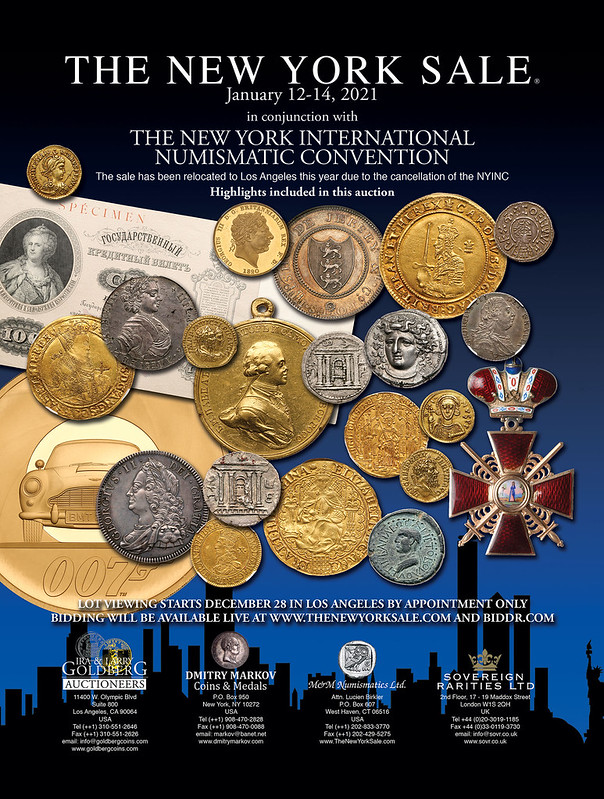
BRITAIN TO UPDATE 1996 TREASURE ACT
In Britain, the government is considering expanding the definition of Treasure to include valuable items not made of precious metals. This may not have much of an effect on coin hoards, as finds of 10 or more bronze coins over 300 years old are already considered Treasure. -Editor
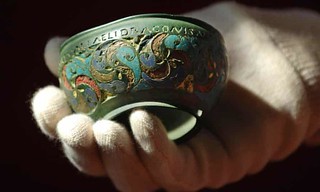 The government plans to change the official definition of "treasure" to cover more rare and precious archaeological finds so that such artefacts can be saved for the nation rather than sold to private collectors.
The government plans to change the official definition of "treasure" to cover more rare and precious archaeological finds so that such artefacts can be saved for the nation rather than sold to private collectors.
Under the 1996 Treasure Act, objects are designated as treasure trove if found to be more than 300 years old and made of gold or silver, or found with artefacts made of precious metals.
Once officially identified as treasure, such objects become the property of the crown and are made available for acquisition by local or national museums for public display.
But this medieval view of treasure does not cover many of the important discoveries of the 21st century. Metal detecting has produced an increasing number of objects from Roman Britain that do not meet the criteria since they are often made from bronze rather than precious metals.
Additionally, some items of national importance have been lost to the public or have been at risk of being sold to private collectors, the culture department said.
The plans for a fresh definition of treasure will aim to ensure that significant finds can be designated as such if they are historically or culturally important, no matter their material qualities.
Finders, landowners, museums and members of the public were invited to take part in the consultation process that led to the government's proposals. Detectorists, archaeologists, museums, academies and curators will have the opportunity to contribute to inform the new definition. Plans to streamline the treasure process will also be introduced.
The popularity of metal detecting as a hobby has led to an increase in treasure cases from just 79 in 1997 to 1,267 in 2017. In 2017 96% of finds that were declared treasure were discovered through metal detecting.
The proposals were welcomed by the British Museum. "We very much welcome working with the [culture department] as it takes forward its work to reform treasure law to protect our shared heritage and encourage best practice amongst finders," said its head of portable antiquities and treasure, Michael Lewis.
To read the complete article, see:
Definition of treasure trove to be recast to protect UK's rare artefacts
(https://www.theguardian.com/science/2020/dec/04/definition-of-treasure-trove-to-be-recast-to-protect-uks-rare-artefacts)
To read a Daily Mail article, see:
Now Roman coins really ARE a national treasure! Ancient objects dug up by metal detectorists will be reclassified to protect Britain's heritage
(https://www.dailymail.co.uk/news/article-9016827/Ancient-objects-dug-metal-detectorists-reclassified-protect-Britains-heritage.html)
To read the complete 1996 Treasure Act, see:
The Treasure Act 1996
Code of Practice (2nd Revision)
(https://finds.org.uk/documents/treasure_act.pdf)
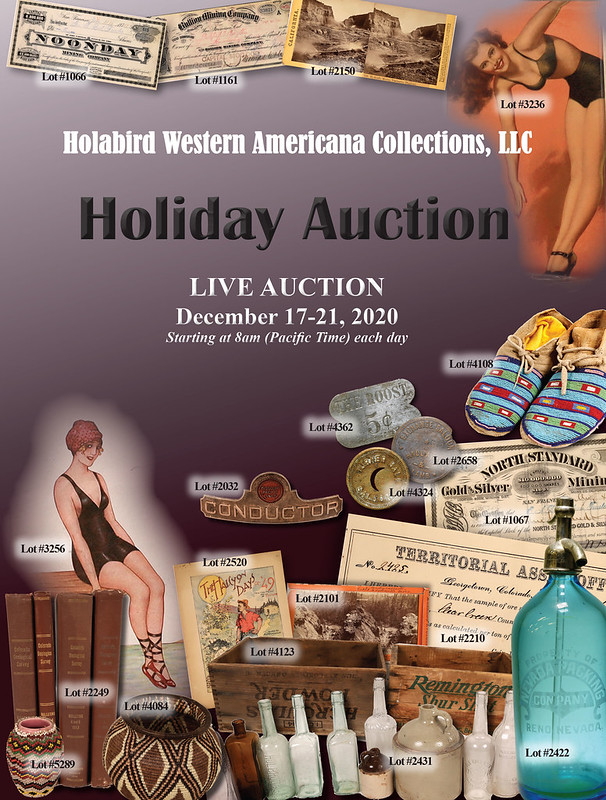
UNESCO'S DOCTORED PHOTOS AND DISINFORMATION
An E-Sylum reader writes:
"I imagine you have already seen this piece concerning the dishonest and deceptive promotion issued by UNESCO.
"This certainly relates to coins. Because such vast numbers of coins were exported from their "points of origin" in the past, when there was little interest in attention or obligation to preserving information on the sources, most numismatic items now in the hands of museums, collectors and dealers lack provenance, sad to say. Personally, I have known dealers and even collectors who deliberately discard accompanying documentation so as to obscure from others (or to avoid recalling) what they paid for items. Yet I would not be surprised to know that these same characters would not want archaeological sites and contexts to be ruined or even disturbed. It is a conundrum.
"Today, there are certain elite circles that seem to want to curtail and regulate all private "collecting" under the guise that it leads to criminal looting, destruction and trafficking, whereas they would probably do nothing to stop the practices of governments that destroy archaeological sites for the sake of their politics or improving their infrastructures (or of not offending certain influential parties). There does seem to be a movement underway today to acknowledge considerably higher values for items that have a long documented provenance, which is as it should be, in my opinion. Maybe this tendency will convince destructive renegades not to keep to their nefarious practices."
UNESCO is the United Nations Educational, Scientific and Cultural Organization. The article by Kate Fitz Gibbon was published November 23, 2020 on the Cultural Property News site. Here's an excerpt. See the complete article and more on the group's website. -Editor
Lawful museum artworks called looted and art market maligned in fraudulent campaign.
UNESCO celebrated the 50th anniversary of the signing of the 1970 Convention with a public relations campaign alleging that collecting antiquities is a primary cause of heritage loss in recent conflicts, funds terrorism, and promotes the theft of artifacts from museums. UNESCO's The Real Price of Art campaign showed purportedly looted and stolen antiquities decorating affluent homes. According to UNESCO, the campaign tells the ‘hidden' story of these objects in order to "reveal the dark truth behind certain works… The other side of the décor… terrorism, illegal excavation, theft from a museum destroyed by war." The campaign was created by the Paris-based DDB agency and publicized on the internet and UNESCO's website. The objects used for the campaign were a Palmyran bust of a woman, a ‘moon mask' from the Ivory Coast, a Gandharan Buddhist head from Afghanistan, a pre-Columbian pot, and a panel from the Ghent Altarpiece by Hubert and Jan van Eyck.
However, except for the van Eyck altarpiece, which was taken from a Belgian museum in 1934, UNESCO's ‘looted' objects were not looted or stolen, and the text that accompanied them was a fabrication. The objects photoshopped into these privileged, private settings were actually legally owned artworks belonging to New York's Metropolitan Museum. They had been acquired in 1901, 1930, and 2015 (this object was in another collection from 1954). The pre-Columbian pot was an Alamy stock image with an equally erroneous text. The last poster depicted a panel from the Ghent Altarpiece by Hubert and Jan van Eyck which actually had been stolen from a museum in Belgium in 1934.
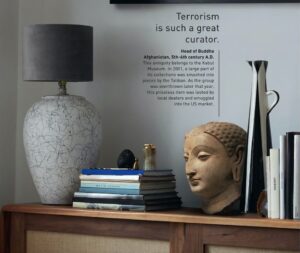
Buddhist head from the collection of the Metropolitan Museum of Art in NY, photo-shopped into the UNESCO campaign poster
The campaign text made false claims about terrorist connections to the art market and stated that there is a multi-billion dollar organized criminal trade in illicit artifacts. These accusations do not stand up to even a second of scrutiny. The economic data on which the campaign is based is invented (and the quoted sources actually tell a different story). In fact, all of UNESCO's claims are contrary to data documented in a major analysis by the RAND Corporation and are belied by World Customs Organization data and other law enforcement reports. The RAND report shows that antiquities crime is actually for the most part ad hoc, opportunistic, and poorly organized, and notes that many, even most objects marketed in the Middle East are likely fakes.
Contrary to UNESCO's oft-repeated claims that antiquities trafficking comes third or fourth in criminal trafficking, after drugs, weapons, and human trafficking, the World Customs Organization reports that the illegal trade in antiquities represents only a tiny sliver of all criminal trafficking – about 0.2% of the total.
When the Metropolitan Museum became aware of the deceptive use of its images it immediately asked that they be removed from the campaign. The Met makes professional quality photographs of objects in its collections available to the public – but requires that they be correctly credited. Instead, UNESCO framed them within false stories that harm the museum's image.
When it was caught, UNESCO backed off.
When news of the faked publicity campaign became public, UNESCO published a statement half-apologizing for telling a false story using Metropolitan Museum images:
"In an initial version of UNESCO's campaign, the ‘Real Price of Art', some posters displayed items from the Metropolitan Museum of Art (MET) database, which is in the public domain. UNESCO's intention was to alert the general public by depicting objects of high cultural value, which should be on display in museums, presented in luxurious private interiors. UNESCO had no intention of questioning the provenance of items in the MET collection… UNESCO regrets the use of MET images that caused any misunderstanding."
UNESCO continued to justify the publicity campaign as, "encouraging [the public] to exercise due diligence when purchasing cultural property." UNESCO also failed to completely remove the campaign from the Internet, still seen here on December 1.
Then UNESCO lied again, replacing the MET images with MORE false stories.
To read the complete article, see:
UNESCO Marks Convention's 50th Anniversary with Doctored Photos and Disinformation
(https://culturalpropertynews.org/unesco-marks-conventions-50th-anniversary-with-doctored-photos-and-disinformation/)

3D-PRINTED COIN FORGERIES
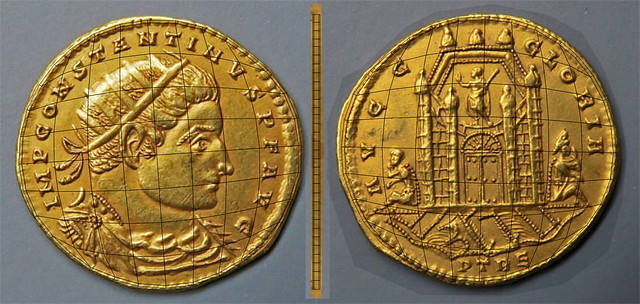
Dr. Kavan Ratnatunga of Sri Lanka writes:
"The new forgery will come from 3D-Printing. I was shown a few 3D printed copper VOC Duits which I or other dealers in Colombo couldn't visually say were not real"
Kavan passed along this link to a website offering 3D models of ancient coins that could be downloaded to a printer. -Editor
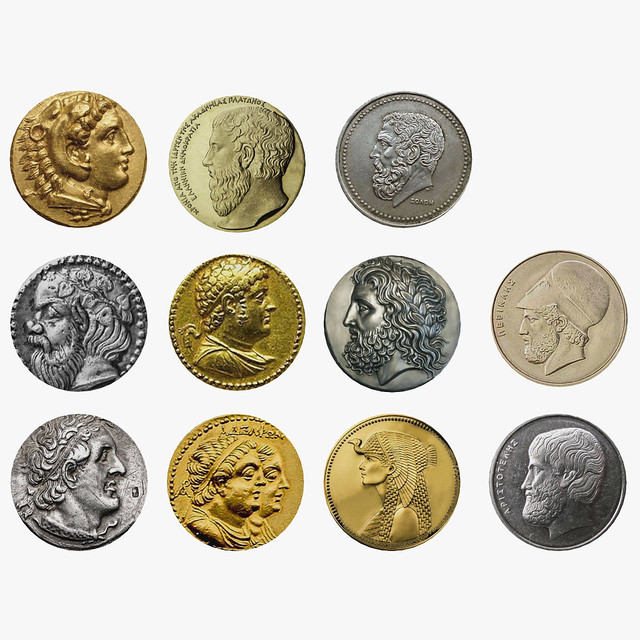
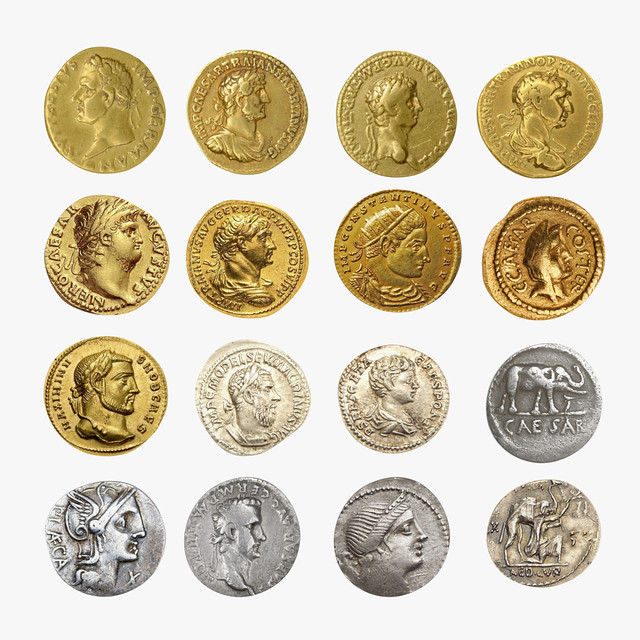
For more information, or to order, see:
Ancient Coin 3D Models
(https://www.turbosquid.com/3d-model/ancient-coin)
THE BOOK BAZARRE
ADVENT COINS: JOHN THE BAPTIST
David Pickup submitted this second article in his series of four for the season of advent, featuring coins or tokens with a link in some ways to the Christmas story. Thanks! This one is about John the Baptist. -Editor
Last week we looked at a king's designs on other thrones and using a religion to add weight to his claim. This week we have a story not about a king or but a rather unusual man. John the Baptist was the sort of person you might cross the road to avoid. He ate scraps, wore rags and lived rough in the desert; but he had a key role in the bible story. He was the cousin of Jesus. Unlike last week's rather special and pricey coin, these featuring him are easier to collect.
John the Baptist appears on many coins from the island of Malta. You can get small copper coins with John the Baptist at reasonable prices. When I say coins of John, many of them only have a part of him. He came to a sticky end because he was beheaded for standing up to misuse of authority and imprisoned. On Herod's birthday, his daughter Salome danced for the king and his guests. Her dancing impressed Herod so much that he promised to give her anything she wanted. When Salome asked her mother what she should request, she was told to ask for the head of John the Baptist on a platter. Herod reluctantly agreed and his head was served on a platter. Sometimes it is difficult to know what present to get someone who seems to have everything. Her mother knew exactly what she wanted!
Maltese coins often have images of John because of the link with the Order of Knights of the Hospital of Saint John of Jerusalem or Knights Hospitaller which was a medieval and early military order. It was headquartered in the Kingdom of Jerusalem until 1291, on the island of Rhodes from 1310 until 1522, in Malta from 1530 until the 1790s. Some of the coins show the full image of John. Here is a rather nice silver coin.
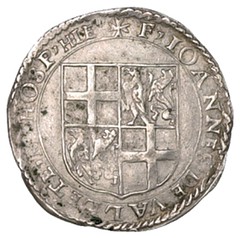
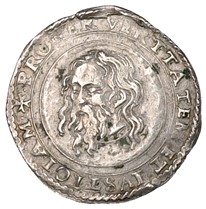
Lot 1082 Date of Auction: 7th October 2003
Sold for £180
Collection of Coins, Banknotes and Medals of Malta formed by Bill Adams
Malta, FOUR TARI, reads HIE, rev. Baptist's head on round charger, reads PROTER and IVSTICIAM·, 11.40g/2h (RS 38 obv., 43 rev.).
Image by kind permission of © Dix Noonan Webb.
To read the earlier E-Sylum article, see:
ADVENT COINS: A GAME OF THRONES
(https://www.coinbooks.org/v23/esylum_v23n48a25.html)
GOLD DROPPED IN CHICAGO SALVATION ARMY KETTLES
Len Augsburger passed along this Chicago Tribune article about Salvation Army kettle donations to me and Tom DeLorey, knowing Tom handled these coins from time to time while working at Harlan Berk. -Editor
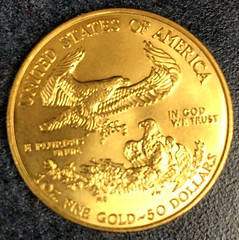 The Salvation Army got a few glimmers of hope this past weekend as it faces unprecedented need and dwindling donations.
The Salvation Army got a few glimmers of hope this past weekend as it faces unprecedented need and dwindling donations.
A gold coin and a gold bar were anonymously donated at separate red kettles Saturday, according to Salvation Army spokeswoman Katie Heinz Pfingsten. A $50 American Gold Eagle coin was donated at a Jewel in Bartlett and the gold bar was dropped in a kettle outside a Jewel in Mundelein. Each is valued at $1,800 to $1,900.
Lt. Scott Smith, with the Salvation Army's Tri-City Corps, said the gifts offer some reassurance that things may not be as dire this year as first thought.
"It 100% gives me hope. Every year, every Salvation Army corps is going, ‘I hope we can make our goal this year,' " he said. "But the reality this year is, I hope we can make our goal and then some, and that God will continue to provide what we need in order to help the people that we're helping."
His corps will get the proceeds from the coin since donations serve the communities where they're made. "The gold coin is huge," he said. "That's more money than would come in on multiple kettles on a regular day."
Nearly three-quarters of the Salvation Army's annual budget typically is made up of donations from the winter Red Kettle drive. So far, the money collected in the kettles is down 50% for the year in the Metropolitan Division, which runs from Rockford to Lake County, Indiana, according to Heinz Pfingsten.
To read the complete article, see:
Glimmers of hope: Gold coin, gold bar dropped in Salvation Army kettles in season of rising need and dwindling donations
(https://www.chicagotribune.com/news/breaking/ct-salvation-army-gold-coin-donation-20201201-7v2rmftn5zeeza7pypeqwx2qrm-story.html)
Tom writes:
"One time I dropped a Krugerrand wrapped in a silver certificate into one of the kettles outside Marshall Fields, and a few days later the Officer who was in charge of donations brought the silver certificate into the store along with a few other odd gold and other pieces.
"Worried that somebody might have pocketed the coin, I asked him "What about the Krugerrand that was wrapped in it?" Which of course told him that I was the person who had dropped it in. He laughed and said "Oh, we know what those are, but we had never seen a dollar bill like this!"
"We always made very strong offers on the older U.S. gold and other stuff that came through the kettles, but they always put them up for auction and got way more than our offers from people who wanted to make a donation that way. I am sure they were just using our offers as starting prices."
I dropped some bills in a kettle the other day, and encourage all of our readers to give something this holiday season. It's been a very tough year for a lot of people. -Editor
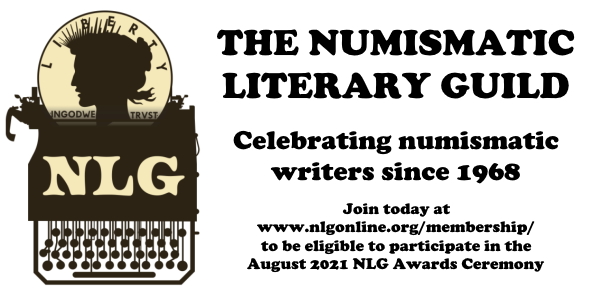
LOUIS ELIASBERG'S BARBER HALF DOLLARS
Ron Guth's latest blog post publishes the first part of the results of his investigation into the current whereabouts of the coins once owned by collector Louis Eliasberg. Great project! -Editor
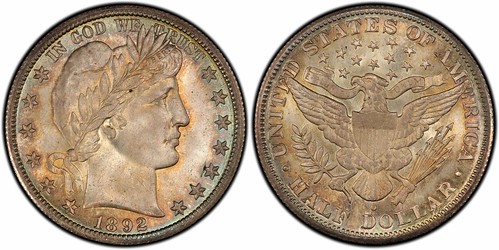
This article was inspired by an eleven part series of blogs I wrote for the Professional Coin Grading Service back in 2015 and 2016 about the Lord St. Oswald Large Cents (http://www.pcgsblog.com/?s=oswald). The object of those posts was to identify each of the Lord St. Oswald coins that had been sold decades earlier, to bring them up-to-date with contemporary grades, and to show comprehensive provenances for each individual coin. The blogs generated a lot of positive feedback and a desire for more of this type of research. The Numismatic Literary Guild bestowed their Best Blog of 2016 to this interesting exercise.
Ever since then, I've toyed with the idea of doing a similar project with the Louis Eliasberg, Sr. coins, he being famous for having completed a set of all U.S. coins minted from 1793 until 1950 (the year he purchased the last coin needed for his set). Obviously, this is a huge project, but it is well underway thanks to Brett Charville, PCGS President, who provided a list of the certification numbers for over 1,000 coins that have been graded by PCGS with the Eliasberg pedigree. To that list, I've added many more coins that have been identified as having originated with the Eliasberg collection thanks to the high-quality digital photographs provided by the major numismatic auction houses, such as Heritage, Stack's/Bowers, the Goldbergs, Great Collections, David Lawrence, and others. Because many Eliasberg coins have had their provenances stripped away over the years, it is always rewarding to "find" another one. Other Eliasberg coins have simply been off the market ever since the 1982, 1996, and 1997 auction sales of his coins.
Thus, it was particularly exciting to run across a number of Eliasberg Barber Half Dollars in the upcoming sale of the Larry Miller collection by Stack's/Bowers on December 17, 2020. Mr. Miller was in attendance at the April 1997 sale of the Eliasberg Barber Half Dollars conducted by Bowers & Merena, where he purchased quite a few of the coins and placed them in his collection. They have remained there ever since, but will soon become available to other collectors. This cache of Barber Half Dollars from the Eliasberg/Miller collection allowed me to fill in enough holes so that the collection of Eliasberg provenances for this series is almost complete.
Eliasberg obtained most of his Barber Half Dollars from the Clapp family collection, started by John M. Clapp in the late 1800's and continued by his son, John H. Apparently, J.M. had an arrangement with the mints to obtain coins from the year of issue, including Proof coins and those made for circulation. Judging by the quality of the coins, it appears that someone selected coins for the Clapps with great care. The Clapps eschewed circulation strikes when Proofs were available. Thus most, if not all, of the Barber Half Dollars in the Clapp and Eliasberg collections from the Philadelphia Mint are Proofs, while all of the branch mint examples are high-grade circulation strikes. As a result, there is no such thing as a complete set of circulation strike Barber Half Dollars in either the Clapp or the Eliasberg collections and it was left to later collectors, such as Dr. Thaine Price, Dr. Duckor, Dale Friend, John Hugon, Dr. Shireman, and others to accomplish that goal.
The following information is the best I can come up with at this time. If you are aware of additional information on any of these coins or any of the missing ones, please contact me at ron@numismaticdetectives.com. Thanks in advance for all your help.
See the article online for all the provenance details. Excellent undertaking! -Editor
To read the complete article, see:
Looking For Louis Eliasberg's Barber Half Dollars, Part I
(https://numismaticdetectives.com/blog/f/looking-for-louis-eliasbergs-barber-half-dollars-part-i)
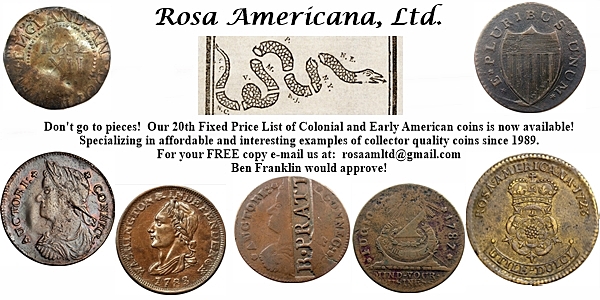
THE 1965 COMMEMORATIVE CHURCHILL CROWN
Jonathan Moscoso Briceño of Chimbote Peru recently published an article on the 1965 commemorative Churchill crown for the International Churchill Society. With permission, we're publishing an excerpt here. Thank you. -Editor
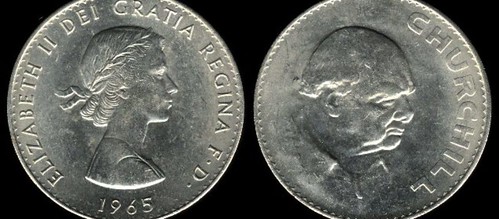
The Royal Mint in May 1965 authorized the issuance of a sterling currency series in 16 denominations. One of which was the "British Crown" coin in honor of Sir Winston Churchill who died on January 24, 1965.
Obverse: Queen Elizabeth II in profile, year of issue 1965 and Latin phrase "ELIZABETH II DEI GRATIA REGINA F.D. (fidei defensor)". In the translation, the phrase proclaims: "Elizabeth II by the grace of God, queen and defender of the faith".
Reverse: Portrait of Sir Winston Churchill. Taken from the bronze statue by his favorite sculptor, Oscar Nemon.
The youthful portrait of Her Majesty without crown, was made in 1952 by engraver Mary Gaskell Gillick, this was selected among seventeen proposals, is the first portrait that marked the coins of the reign of Queen Elizabeth II.
Sir Winston Churchill was considered the greatest prime minister in British history. He is recognized: as a statesman, for leading his country through the tumultuous Second World War; as an army officer, and was prime minister of the United Kingdom twice, rebuilding the United Kingdom in the post war period. After his political career, he was a writer and an eloquent speaker, nicknamed "The Bulldog" by the British press.
He was a member of the British aristocracy. For the Spencer branch he was related to the Dukes of Marlborough, born in 1874 at Blenheim Palace, Oxfordshire, and baptized Winston Leonard Spencer Churchill. His father, Lord Randolph Churchill, was also a politician and served as Chancellor of the Exchequer and his mother was Jennie Jerome, an American socialite.
He was awarded the 1953 Nobel Prize in Literature and was the first person to be made an honorary citizen of the United States of America.
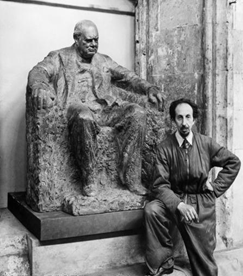 In early September 1965, Sir Winston's widow, Lady Spencer Churchill, visited the London Mint in Tower Hill, to witness the
minting of the first coin in tribute to her husband, without imagining
that it would start a very high coinage.
In early September 1965, Sir Winston's widow, Lady Spencer Churchill, visited the London Mint in Tower Hill, to witness the
minting of the first coin in tribute to her husband, without imagining
that it would start a very high coinage.
In July 1966 the coinage was completed with a record of 19'640,000( pieces, this was three times more than the 1953 coinage celebrating the coronation of Her Majesty Elizabeth II. The coinage was very high due to the high demand that it had in the United States for having been an allied country in the Second World War, in addition Winston Churchill's mother was born in the United States of America.
This currency was not included in the demonetization legislation when decimalization was introduced in 1971. Royal Mint has confirmed that the currency is still legal tender, having been remonetized with a value of 25 pence.
It is the first British coin to feature someone who is not a member of Her Majesty Elizabeth II's family.
It is basically the first coinage since 1902 of a "British crown", which does not have a face value, showing itself as an unusual coin called "medal currency".
To read the complete article, see:
The Crown
A CLOSEUP LOOK AT THE FAMOUS CHURCHILL COMMEMORATIVE
(https://winstonchurchill.org/publications/churchill-bulletin/bulletin-150-dec-2020/the-crown/)
A MEDAL CURRENCY
(https://1d4vws37vmp124vlehygoxxd-wpengine.netdna-ssl.com/wp-content/uploads/2020/11/A-MEDAL-CURRENCY-Winston-Churchill-Jonathan-Moscoso.pdf)

PURPLE HEART COMMEMORATIVE COIN ACT STATUS
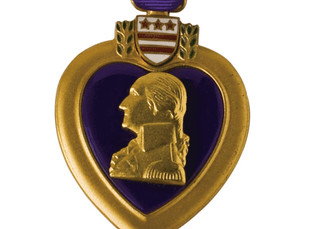 Bill Van Ornum, retired professor from Marist College, writes from the Hudson Valley:
Bill Van Ornum, retired professor from Marist College, writes from the Hudson Valley:
"This bill's sponsor is from around here and the National Purple Heart Hall of Honor is nearby me in New Windsor, and very close to the United States Military Academy, and the Mint located there."
Thanks - here's an excerpt from the article. This Act has been in the wings for several years. -Editor
The House of Representatives has advanced Rep. Sean Patrick Maloney's (D, NY-18) bill, the National Purple Heart Hall of Honor Commemorative Coin Act with unanimous support. The bill now awaits the president's signature to become law.
The bill will honor the National Purple Heart Hall of Honor and all our Purple Heart recipients with a commemorative coin produced at the United States Mint at West Point.
Proceeds from the sale of the coin would be directed to the National Purple Heart Honor Mission, Inc. for tribute projects and educational programs that raise awareness about the National Purple Heart Hall of Honor, and pay tribute to the sacrifices of all the servicemen and women who were wounded or killed in combat.
"Supporting our veterans and honoring our Purple Heart recipients is something we can all agree with – and this bipartisan bill proves that. I'm proud this bill, which I've worked for years to pass, is headed to the President's desk," said Maloney.
"This is an historic occasion for America's combat wounded and those who made the ultimate sacrifice for our country," said Richie Lay, a Purple Heart recipient and chairman of the National Purple Heart Honor Mission. "The creation of an official U.S.-minted coin honoring our Purple Heart heroes will ensure the National Purple Heart Honor Mission is able to continue to promote visitation to the National Purple Heart Hall of Honor, in New Windsor, NY, and fund other tribute programing that honors all those brave American who have sacrificed for our freedom."
To read the complete article, see:
Purple Heart Commemorative Coin Act heads to president's desk to become law
(https://midhudsonnews.com/2020/12/04/purple-heart-commemorative-coin-act-heads-to-presidents-desk-to-become-law/)
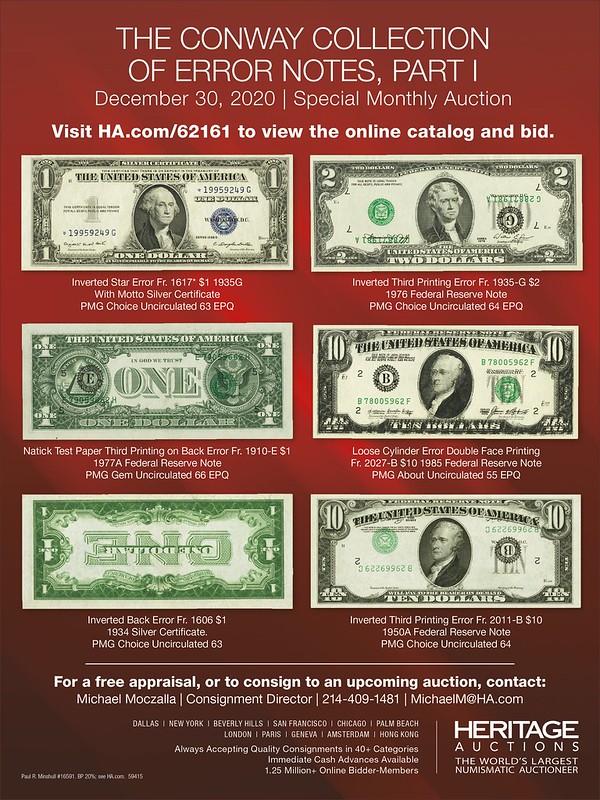
MEDALS OF THE GRANGE
On Friday I read in The Writer's Almanac that it was the date of the founding of The Grange. In line with this theme, here are a few Grange medals I found online. -Editor
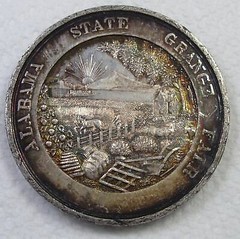 "It was on this date in 1867 that Oliver Hudson Kelley founded the Order of the Patrons of Husbandry, also known as The Grange. It's the oldest national agricultural advocacy organization. Kelley was born in Boston in 1826, and moved to Itasca, Minnesota, to become a farmer when he was 23. After the Civil War, President Andrew Johnson sent him to the Southern states to report back on the condition of the farms there.
"It was on this date in 1867 that Oliver Hudson Kelley founded the Order of the Patrons of Husbandry, also known as The Grange. It's the oldest national agricultural advocacy organization. Kelley was born in Boston in 1826, and moved to Itasca, Minnesota, to become a farmer when he was 23. After the Civil War, President Andrew Johnson sent him to the Southern states to report back on the condition of the farms there.
It was during this trip that Kelley began to think about a fraternal organization, similar to the Freemasons, that would work to improve conditions for farmers and bring the North and South back together in a common cause. So he formed the Order of the Patrons of Husbandry for this purpose, and his organization was unusual for the time in that it encouraged women and teenagers to participate. In fact, the charter required that four of the elected positions must be held by women. The Grange represented the interests of farmers in disputes with the railroads, it established free rural mail delivery, and it helped farmers improve their lives through research-based education. It also championed non-agricultural causes like temperance and women's suffrage."
There are many beautiful agricultural medals from around the world, including many state fair awards, but I figured there must be medals struck by or for the organization itself. I found the above Alabama State Grange Fair silver medal in a Google search, but had trouble navigating to the original web page. Below is one of the few other medals I found - a 1973 centennial medal for the New Hampshire State Grange. There must be more out there - can anyone send us images of other Grange medals? -Editor
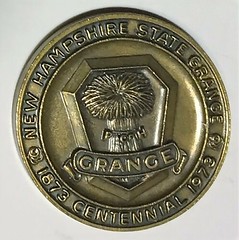
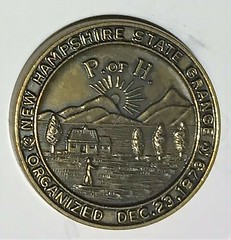
https://www.ebay.com/itm/C8506-N-H-STATE-GRANGE-BRONZE-MEDAL-CENTENNIAL-1973/372640340145
To read the complete article, see:
The Writer's Almanac for Friday, December 4, 2020
(https://www.garrisonkeillor.com/radio/twa-the-writers-almanac-for-december-4-2020/)
For more information, see:
National Grange of the Order of Patrons of Husbandry
(https://en.wikipedia.org/wiki/National_Grange_of_the_Order_
of_Patrons_of_Husbandry)
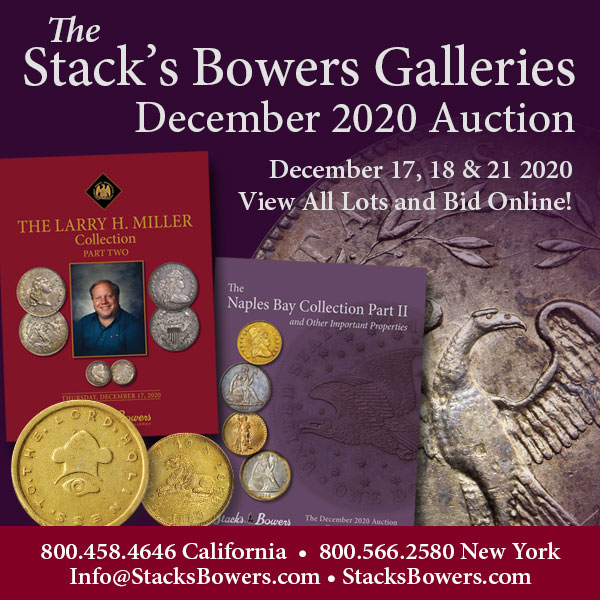
THE 1896 CHINA FERRACUTE PATTERNS
I'm getting caught up on a backlog of news that didn't make it into last week's issue, Here are a couple of press releases from Heritage, This one is about the 1896 China Ferracute Patterns. -Editor
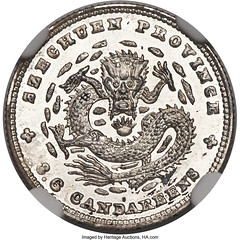
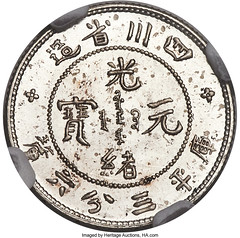
Szechuan silver brass specimen Ferracute pattern
East Meets West With the Ferracute Patterns
Today's interconnected world has blurred the boundaries of trade and innovation between one country and the next. However, there were some surprising intersections of coinage technology between the East and West even in the late 1800s. What do the US Mint, the state of New Jersey, and the government of Szechuan, China, have to do with one another? The answer is the Ferracute pattern coinage of the late 1890s.
In 1896, the Imperial Government of China was in need of modernizing the Chengtu mint in the province of Szechuan. Current technology was inefficient and large-scale, western-style production was impossible, so the search began for a company to supply new minting equipment and dies. The British Royal Mint was contacted first. They made a few pattern coins and submitted a bid for the entire project. However, the American Trading Company--which was operating in China and Japan at the time--was also approached for a bid that was to be obtained from the Ferracute Machine Company of Bridgeton, New Jersey. While Ferracute was known for its metal presses used in canneries, they were also the current supplier of coin presses to the Philadelphia Mint. In the end, the European company's offer was undercut to secure the contract in mid-1896, with a winning bid that amounted to roughly $13,000 and included a complete mint setup, including five coin presses, punching presses, feed attachments, and coin dies.
On March 24, 1897, upon completion of the new machinery, a public demonstration was held at the Ferracute factory in New Jersey. A photo of this event shows formally dressed visitors inspecting sample coins that were struck on the new presses. Among the officials that attended this historic event was United States Mint Chief Engraver, Charles Barber, who engraved the dies for these Chinese coins using a Kwangtung dollar as an exact model, save for the change in province. Ferracute struck a small number of patterns in silver and slightly more in brass to demonstrate the presses it built for China, handing out samples of the brass strikes to attending dignitaries.
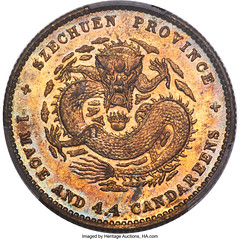
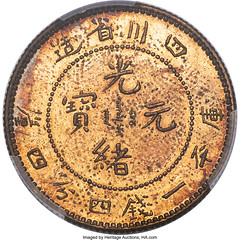
Szechuan brass specimen Ferracute pattern
Heritage Auctions will be offering one of these Szechuan pattern coins in the December Hong Kong Auction #3087. This Kuang-hsü brass Specimen "Ferracute" Pattern 20 Cents was struck around 1896/7 and is graded SP (Speciment) 62 by PCGS. These famed pattern coins connect the East and West and have a fascinating history. Relatively few of these pieces are available to collectors today, and Heritage has even sold a full set of these patterns for just over $1,000,000!
As a single piece rather than a set, this coin will be more accessible to collectors and is estimated at $10,000 and up. Currently, only two pieces rank finer at PCGS, so do not miss your chance to place a bid:
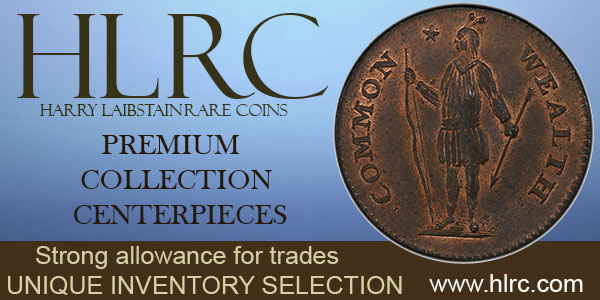
DEL MONTE BANANA LABEL ERROR NOTE OFFERED
Remember that great "Del Monte Note" error we discussed earlier? It's up for sale again. Here's the Heritage press release. -Editor
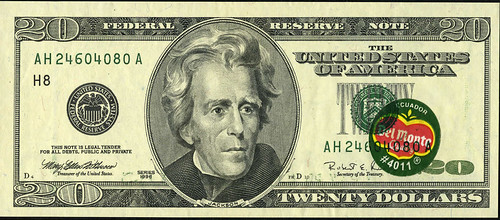
Unpeel the Famous "Del Monte Note," Accidentally Printed With a Banana Sticker!
Heritage Auctions will be offering a unique and oddball $20 bill in the January Paper Money Auction #3581. This intriguing note was accidentally printed with a Del Monte banana sticker obstructing part of the design and has been nicknamed "The Del Monte Note." Most obstructions fall off shortly after printing, leaving behind a blank area of paper lacking the design, but errors with objects that "stick" to the note and enter circulation are very rare. A few objects seen on other obstruction errors include a band-aid, paper fragments, scotch tape, and wood shavings.
As our catalogers explain, United States paper money is essentially printed in three stages: the first printing is the back of the note, the second printing provides the face devices, and the final printing includes both seals and the serial numbers. When this note was printed at the Fort Worth Western Currency Facility, it went through the first and second printings normally before the Del Monte sticker found its way onto the surface. The sticker's placement is ideal, as it covers part of the second printing details and is overlaid by part of the Treasury Seal and the right serial number from the third printing.
Some have argued that this note was not truly an error or accident but rather the result of a BEP employee playing with the process. However, it was released into the economy through the regular channels of the Federal Reserve and then into regular circulation, so it is hard to say what really happened. In the summer of 2004, a college student in Ohio received it as part of an ATM withdrawal and shortly there after posted it on eBay where it sold to the highest of 12 bids. The note was a bargain at around $10,000 on eBay as news of the note had barely hit the collecting community. In subsequent weeks, it was the cover story in both Bank Note Reporter and Numismatic News. Since then it has earned a spot on the cover of the US Error Note Encyclopedia, second edition, by Stephen M. Sullivan. This fabled error is now looking for a new home, but it will take serious consideration and a very strong bid in order to bring one of the greatest paper money errors home.
Check out this very a-peeling error note here. The images are fascinating and something that you will definitely want to see (and bid on!)
For more information, or to bid, see:
https://currency.ha.com/itm/error-notes/fr-2084-h-20-1996-federal-reserve-note-pmg-choice-uncirculated-64-epq/p/3581-29001.s
To read the earlier E-Sylum article, see:
DEL MONTE BANANA LABEL ERROR NOTE SELLS FOR $25,300
(https://www.coinbooks.org/esylum_v09n02a05.html)
APRIL FOOLS 2020
(https://www.coinbooks.org/v23/esylum_v23n14a12.html)

COUNTERFEIT MONEY RING BUSTED IN VIETNAM
Howard Daniel writes:
"My wife Phung found this article and forwarded it to me. It is a little old but has the materials in the photograph included in the article to create the notes. Interesting that the authorities would do this."
Thanks. The article was published on July 4, 2020. -Editor
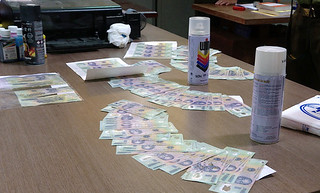 Police in the southern province of Ba Ria – Vung Tau have broken up a large-scale ring of making, storing and consuming counterfeit money that operates across several southern provinces and cities.
Police in the southern province of Ba Ria – Vung Tau have broken up a large-scale ring of making, storing and consuming counterfeit money that operates across several southern provinces and cities.
As many as 13 people involved in the ring have been prosecuted, of whom 12 have been arrested while a fugitive is being wanted, Colonel Le Ba Trung, head of the provincial Department of Police's security and investigation unit, said on Saturday.
All means to produce counterfeit money and nearly 400 illicit VND500,000 (US$21.6) banknotes about to enter circulation were also confiscated.
The ring was detected after police in Song Xoai Commune of Phu My Town caught red-handed Tran Anh Khoa, 28, and Huynh Thi Kim Ngoc, 25, using counterfeit money to purchase goods.
Scanning the couple on the spot, the officers discovered 200 counterfeit VND500,000 banknotes.
Khoa then confessed that he had bought the illegal banknotes online.
The provincial security and investigation police unit was able to identify the seller as Le Ngoc Hai, hailing from My An Town in Thap Muoi District in the Mekong Delta province of Dong Thap.
Functional forces searched Hai's residence in My An and seized many exhibits and equipment that he used to make the counterfeit money, including a computer, a color printer, a scanner and colorings.
Hai told the police that he came up with the idea of making counterfeit money earlier this year and went online to look up the methods.
To read the complete article, see:
Large-scale counterfeit money ring busted in southern Vietnam
(https://vnexplorer.net/large-scale-counterfeit-money-ring-busted-in-southern-vietnam-a202060192.html)

LOOSE CHANGE: DECEMBER 6, 2020
Here are some additional items in the media this week that may be of interest. -Editor
Reynolds Reviews Connecticut Coppers
Greg Reynolds is publishing a multipart series about Connecticut Coppers on the Greysheet site. The first two parts are available online. -Editor
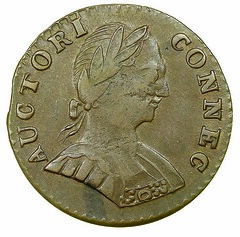 In 1785, the State of Connecticut authorized a private firm to mint copper coins for circulation, and these date from 1785 to 1788. The theme here is that it is not very difficult to assemble a complete general set in a reasonable amount of time without spending a lot of money.
In 1785, the State of Connecticut authorized a private firm to mint copper coins for circulation, and these date from 1785 to 1788. The theme here is that it is not very difficult to assemble a complete general set in a reasonable amount of time without spending a lot of money.
Before the U.S. Constitution was adopted, the highest laws in the United States were the Articles of Confederation, which authorized individual states to mint their own coins. Moreover, the Articles of Confederation made it very difficult for a national coinage to be viable. Later, the U.S. Constitution allowed for a national mint to be established by passing a law; a special procedure was not required.
Interestingly, the U.S. Constitution prohibited individual states from minting their own coins, which is why there are no State Coppers dated after 1788, though some were likely to have been backdated and minted after 1788.
To read the complete articles, see:
CONNECTICUT COPPERS, PART 1: BACKGROUND AND MEANING
(https://www.greysheet.com/news/story/connecticut-coppers-part-1-background-and-meaning)
CONNECTICUT COPPERS, PART 2: Contents of a Logical & Affordable Set
(https://www.greysheet.com/news/story/connecticut-coppers-part-2-contents-of-a-logical-affordable-set)
Coin Metal Modification Act
In his Coin Collectors Blog December 5, 2020, Scott Barman discusses one coinage-related bill in the U.S. Congress. -Editor
This week, the House of Representatives suspended their rules to pass H.R. 7995, Coin Metal Modification Authorization and Cost Savings Act of 2020. While the bill appears to have good intentions, it is largely a do-nothing measure for a do-nothing Congress.
The primary problem is that the bill ignores that Congress passed a law in December 2010 (Public Law 111-302, 124 STAT. 3272) that requires the U.S. Mint to research alternative metals and provide a report every two years. Since Congress passed the law, the U.S. Mint issued four reports to Congress, with the last delivered in April 2019.
To read the complete article, see:
Your change ain't changing
(http://coinsblog.ws/2020/12/your-change-aint-changing.html)
Destruction of the Library of Louvain
Here's a sad tale for bibliophiles - the destruction of the Library of Louvain (twice). -Editor
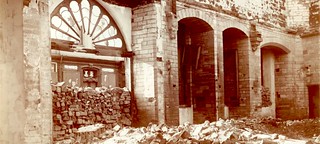 Louvain University was the earliest university to be established in the country that is today known as Belgium. Founded in 1425, the university had educated a number of great minds, including the theologian Saint Robert Bellarmine, the philosopher Justus Lipsius and the cartographer Gerard Mercator. The university was comprised of separate colleges (by the end of the 16th century there were 46 of them), each of which had built up book collections during the Middle Ages, with the result that no central library existed until the foundation of the central university library in 1636.
Louvain University was the earliest university to be established in the country that is today known as Belgium. Founded in 1425, the university had educated a number of great minds, including the theologian Saint Robert Bellarmine, the philosopher Justus Lipsius and the cartographer Gerard Mercator. The university was comprised of separate colleges (by the end of the 16th century there were 46 of them), each of which had built up book collections during the Middle Ages, with the result that no central library existed until the foundation of the central university library in 1636.
This library grew over the succeeding century and a half, its collections increasing in size through purchase and donation. Louvain was a comparatively rich university and its riches helped the development of the library. In the late 17th century a new approach to shelving, recently established in France, was adopted with bookcases fitted against the walls of the library, with windows above, as opposed to the old medieval and Renaissance fashion of bookcases projecting out from the walls into the library room.
By 1914 the library at Louvain had over 300,000 volumes in its collection, and a group of special collections of international quality. The importance of the library could be seen in its glorious baroque buildings. Its holdings reflected Belgian cultural identity, documenting the intellectual contribution of the greatest minds of the region, and preserving the university's strongly Catholic cultural flavor. It was also a national resource, as a library of legal deposit and open to the general public. There were almost a thousand volumes of manuscripts, mostly classical authors and theological texts, including the Church Fathers, and medieval philosophy and theology. It also held a sizeable collection of incunabula and uncatalogued collections of oriental books, and manuscripts in Hebrew, Chaldaic and Armenian.
To read the complete article, see:
One of Europe's Great Libraries Didn't Stand a Chance… In Either of the World Wars
(https://lithub.com/one-of-europes-great-libraries-didnt-stand-a-chance-in-either-of-the-world-wars/)

COIN STUCK IN NOSE FOR 50 YEARS
In the buy-and-hold-investing department, Len Augsburger passed along this article about a Russian man who had a one kopeck coin stuck in his nose for 50 years. -Editor
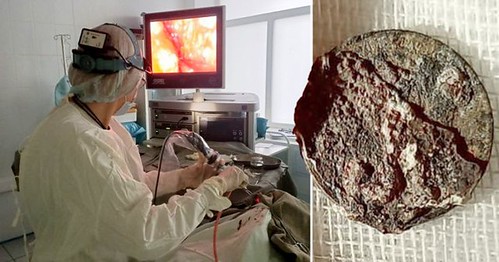
A man has finally had a coin removed from his nose after it was stuck for more than half a century.
The 59-year-old unnamed Russian man was aged just six when he wedged the money into his right nostril. He was ‘too scared' to tell his ‘strict' mother about it and then later ‘forgot,' local media reported.
The man apparently managed to live for the next fifty years unimpeded by the blockage until recently started complaining he could not breathe at all in his right nostril.
He went to hospital and was given a scan which showed the unexpected object in the nasal passage.
Rhinoliths – stones in the nasal cavity – had formed around the coin, constricting his ability to breathe.
Medics carried out endoscopic surgery under general anaesthetic removing the stones and retrieving the Soviet one kopek coin from his nose after 53 years.
The money – officially worth around one penny at the time – ceased to be used in Russia after the USSR's collapse in 1991 and the hammer and sickle emblem was no longer visible on the coin.
To read the complete article, see:
Coin removed from man's nose after being stuck for more than 50 years(https://metro.co.uk/2020/11/28/coin-removed-from-mans-nose-after-being-stuck-for-more-than-50-years-13671360/)

FEATURED WEB PAGE: INDIAN BANKNOTE MYTHOLOGY
This week's Featured Web Page is a Mintage World blog article on themythology of early Indian banknotes.
In the distant past, however, before any sciences existed, the beginnings of the world and of society were explained by MYTHOLOGY. Mythology is a common topic of expression through artwork. Not just dance; painting, sculpting, the mythology is a way of expression during many facets of day to day life. Even on Indian coins, stamps, and banknotes Mythology is featured with distinct concepts. The blog covers the topic: Mythology Featured on Early Indian Banknotes.
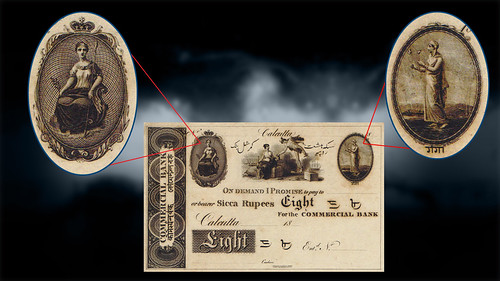
https://www.mintageworld.com/blog/mythology-featured-on-early-indian-banknotes/
